Over the course of these retrospective write-ups I have, where possible tried to cover MAME and MESS as a whole, because for quite a long time now they have both been part of the same project, worked on by the same developers and could even be built as a single project.
2015 was the year this was finally recognized and the projects merged down to a single ‘MAME’ project with the official binary distributions supporting not only arcade games but also a vast library of other computers, consoles and electronic gadgets. I’ll talk about this more later.
Fore!
The Golden Tee series is one of the more recognizable things to be found in arcades and bars in recent times, the trackball based money suckers have been around for a few generations now, and until this point MAME had only emulated the 1st and 2nd generation of games. The third generation of games which spanned late 2001 (with the original Fore! release) until 2006 (with the ‘Complete’ release) was the first to actually be rendered in 3D using a Voodoo series card (in this case a Banshee) and the first iteration of the series to add a backspin button.
I guess from a readers perspective one of the most interesting things about this work is that it was initially an external submission, in other words it was done by somebody who was not at the time a member of the development team. I think that sends an important message out to everybody, don’t be afraid to look at things, if you really want to see an improvement in MAME, want to see something emulated that we don’t emulate then put a bit of effort in, try to work things out, you could end up being the person who submits the one of the most important pieces of progress next year, or the one after that. There are still plenty of drivers for both home and arcade systems where specific skills are needed, sometimes software skills, sometimes reverse engineering skills, and especially these days, hardware skills, being able to work with the hardware, extract data from it etc. Even the previous year for example, it was also an external contributor (trap15) making one of the more significant improvements to a large number of games by extracting the internal ROM of the NMK004.
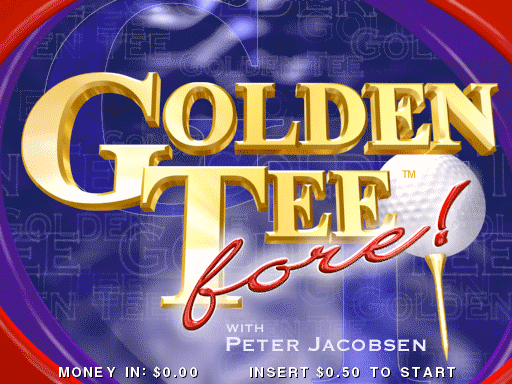
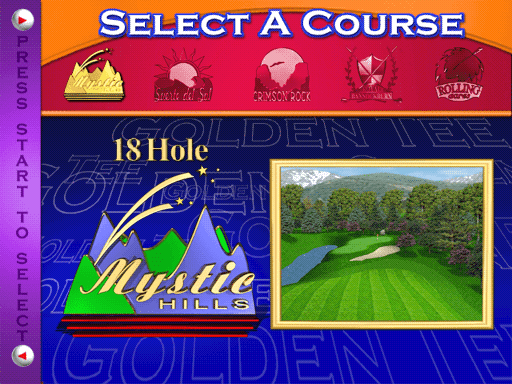
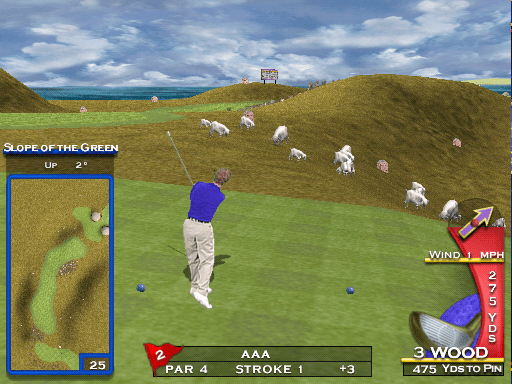
(the original Golden Tee Fore! release actually has 2 9-hole courses not present in any other version!)
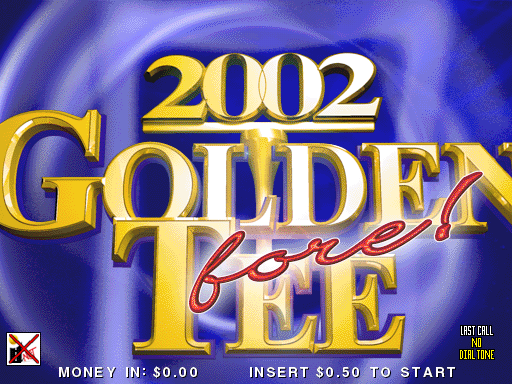
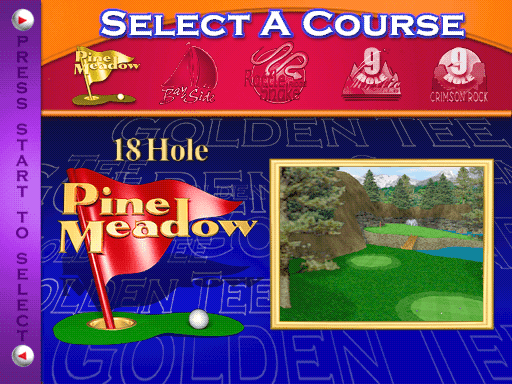
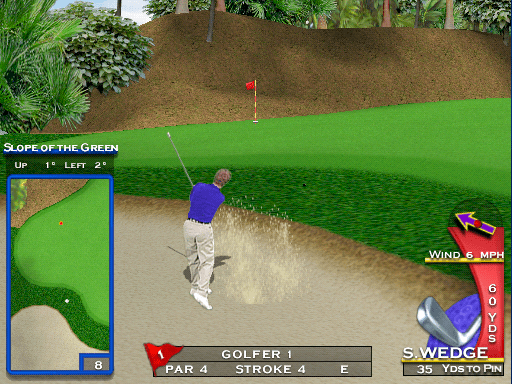
(the 2002 release comes with a new selection of courses following the same formula, 3 18-hole and 2 9-hole)
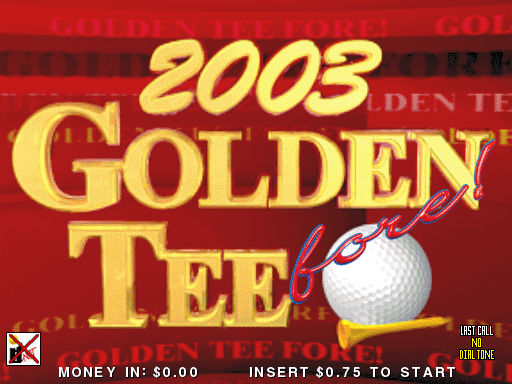
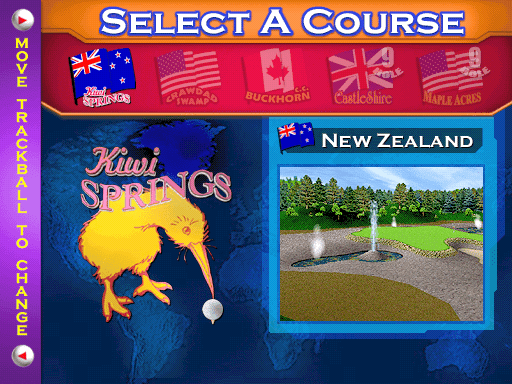
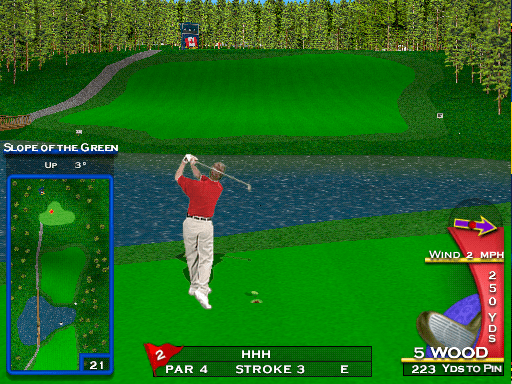
(the 2003 release again follows the same formula offering new courses to play)
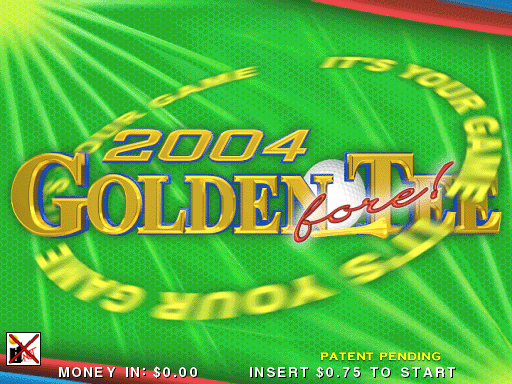
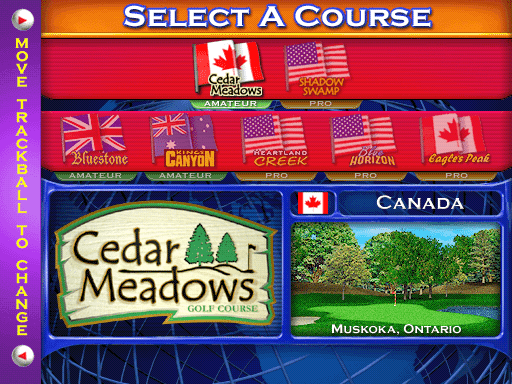
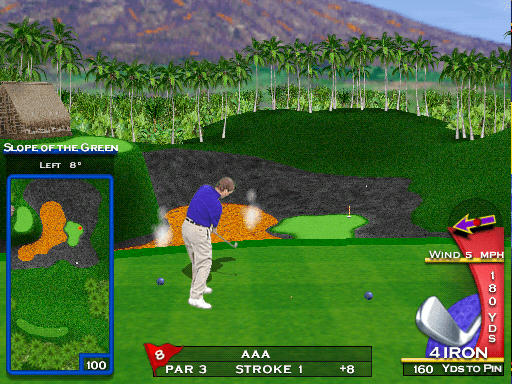
(the 2004 release ditches 9 hole courses but adds easier amateur ones, an ‘extra’ update also boosted the number of courses to 7)
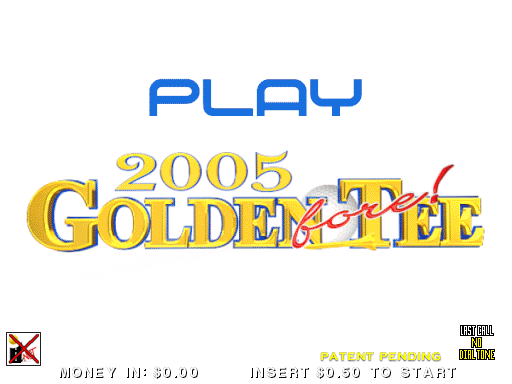

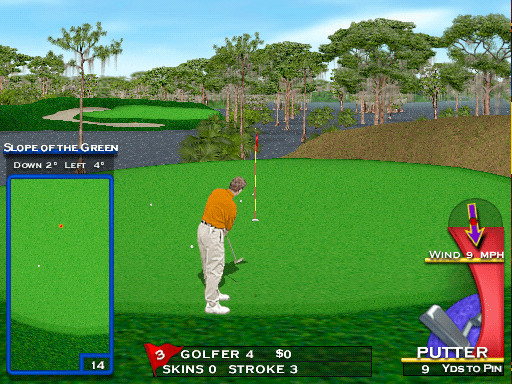
(the 2005 release uses the 2004 formula, but with new courses)
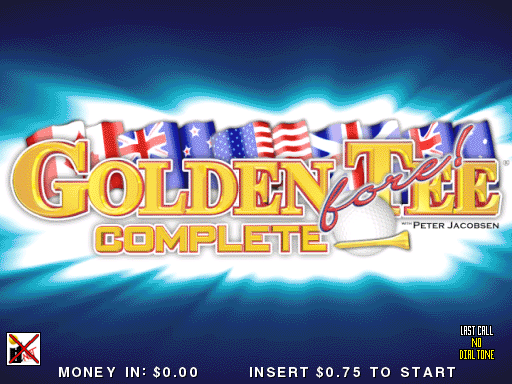
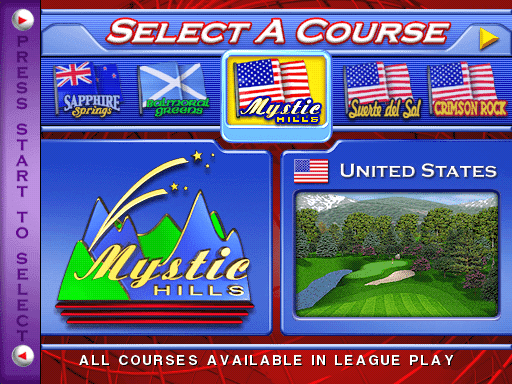
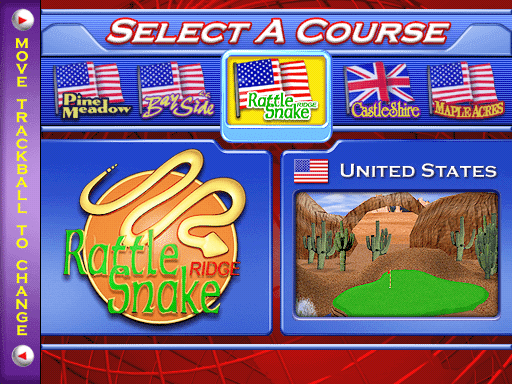
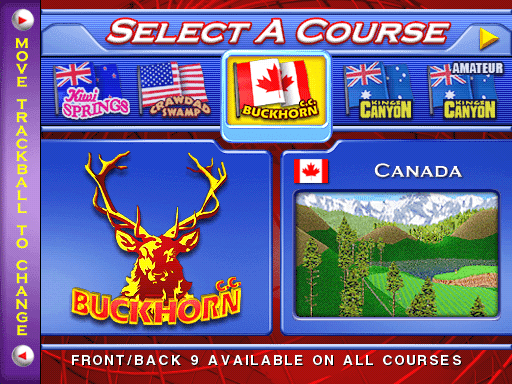
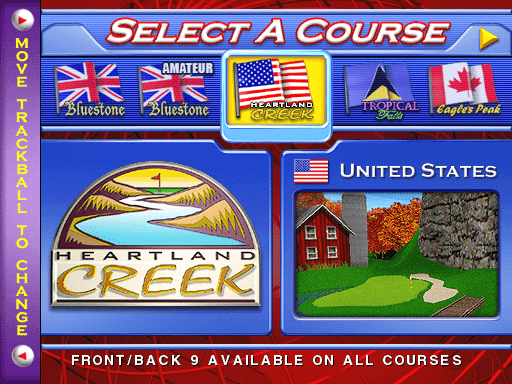
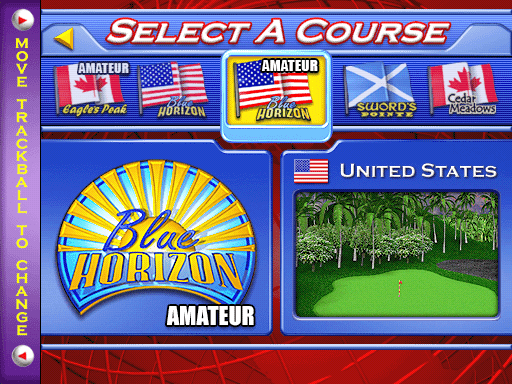
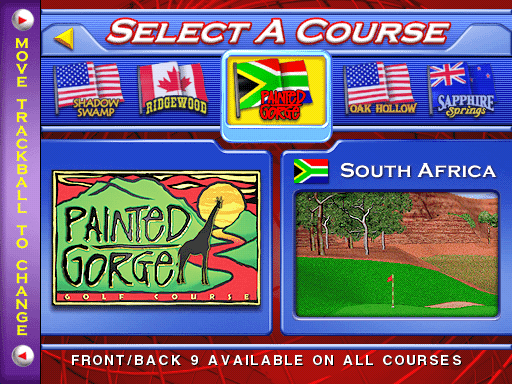
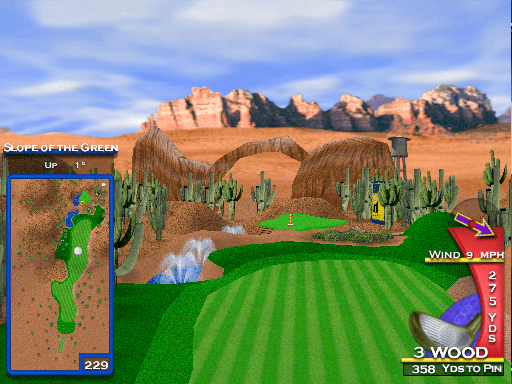
(the 2006 release ‘Golden Tee Complete’ includes almost all courses, even previously online only ones, strangely the original 2 9-hole are missing.)
2 of the other IT games on the same platform also boot, Big Buck Hunter Call of the Wild and Virtual Pool. Unfortunately both seem prone to lockups, after several rounds of play, and can’t really be considered working yet.

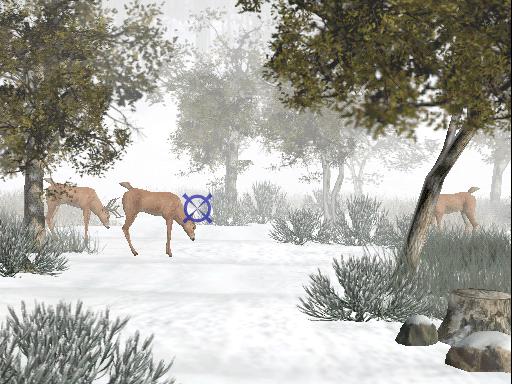
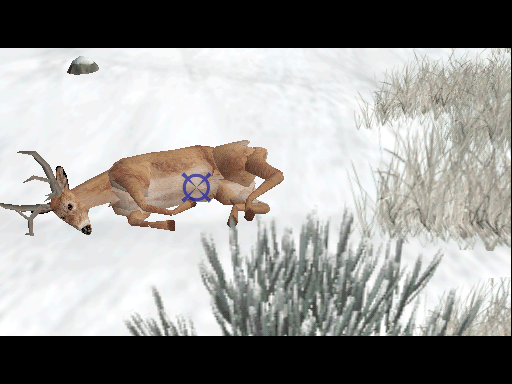
(Big Buck Hunter can be played for a bit if you calibrate it, but will eventually lock up)
Virtual Pool also has some auto stuttering in addition to the lockups, you can get a few games out of it, but trying to complete an entire tour will usually result in a lock-up sooner or later. The progress is certainly impressive, but for now you’ll probably want to avoid these 2 and concentrate on the golf games.
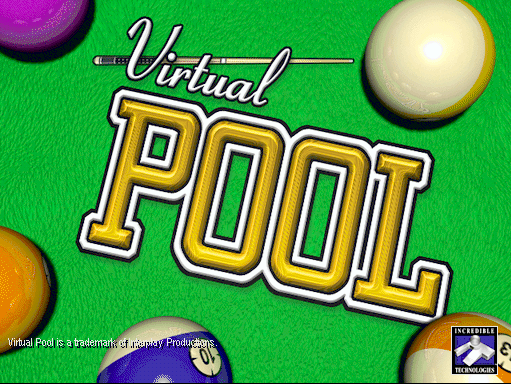
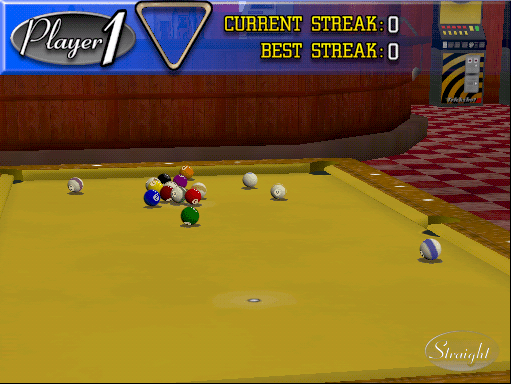
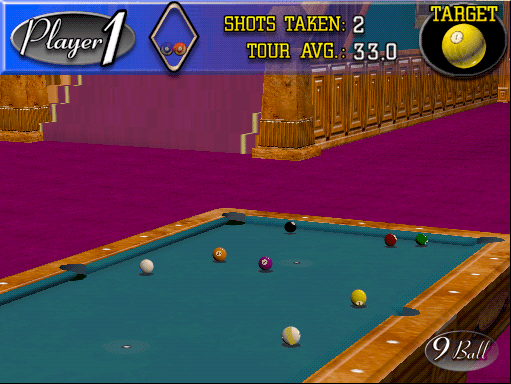
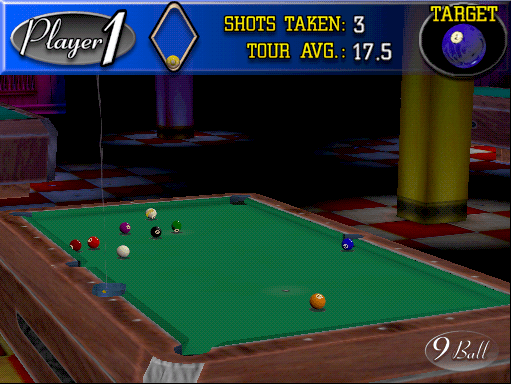
(Virtual Pool suffers from a similar issue, it will eventually lock up on a random loading screen, seems to be protection)
Carnival King and the original (non 2006) version of Big Buck Hunter were also added to the driver, but the former locks up instantly, the latter doesn’t boot at all.
Speedy Blue Hedgehogs
Sonic, despite not really starring in a truly great game since the 16-bit era still has a large fanbase and remains an iconic figure in gaming.
I’ll admit, even I underestimated the size of that fanbase and their interest in all things Sonic, expecting the addition of 2 novelty Sonic items to pass relatively unnoticed despite their rarity. What actually happened was MAME was exposed to more attention than it’s seen in quite a while; the addition of Segasonic Popcorn shop sent news reporters into a frenzy as site after site decided to cover the news despite it simply being a token set of animations that were played while a machine made popcorn rather than any kind of game. The artwork is admittedly well done, but considering the negative reception redemption games and slot machines usually get in MAME it was not something I expected people to focus on.
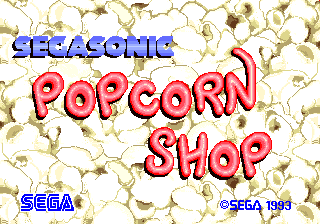

(SegaSonic Popcorn shop is the display part of a Popcorn vending machine!)
The addition a few months earlier of the kid’s ride ‘Waku Waku Sonic Patrol Car’ actually received slightly less attention.
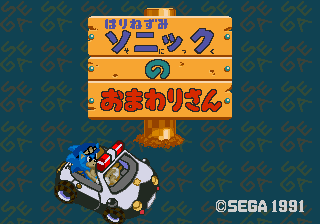
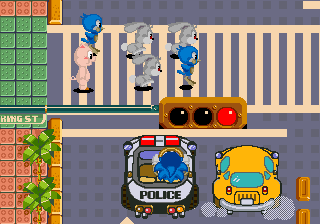
(Waku Waku Sonic Patrol Car was a toy ride for kids to sit in and distract them for a while)
There was actually another Sonic themed kid’s ride, but we were unable to complete the hattrick this year, nor was any work done on the Sonic themed slot machine(s) The rides are tpically very difficult to track down as without both the physical machine and the PCB they’re useless, and being aimed at small children they saw their fair share of abuse.
More Money Than Expected!
The Sonic themed games did not come cheap, nor did an early Nintendo title called Monkey Magic. It’s a bat+ball type game, a popular genre back then, but with a monkey head to destroy in stages rather than the traditional ‘wall’.

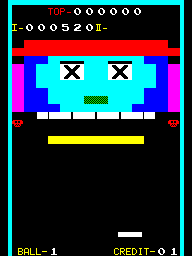
(Monkey Magic is an early Nintendo title released a few years before better known hit titles)
More Work Than Expected
2015 was also a year where we saw significant progress on a number of important systems, but failed to quite make the final breakthrough.
One such system was Namco’s ‘System 10’ platform, one of the few remaining Playstation 1 based platforms that remains unemulated. The reason for this is, despite being Namco’s budget platform, used for low-cost games, low-requirement games (such as Puzzle games and redemption titles) the security is actually more advanced than any other Namco platform we’ve seen. Strides were made on decrypting the game code over the year, but even with the game code decrypted, at which point it seemed like emulation would be imminent, further security measures reared their ugly head and put the brakes on progress.
Capcom’s Magical Tetris Challenge was an unusual release on N64-based hardware, with it’s own unique security. During gameplay the playfield is covered with a black box on the N64 side. This seems to be fully intentional, as research done during the year suggests that the actual Tetris field is rendered by some kind of protection device; we were able to represent it using solid coloured blocks. The problem didn’t end there however, the game has an additional data ROM (actually several Aleck64 games do, but mostly for reasons we don’t yet understand) The issue is that the extra ROM on Magical Tetris Challenge appears to be either encrypted, compressed, or both, so simply trying to use it to render the correct Tetris graphics got us nowhere. Some of the coloured blocks do end up black with the current implementation, so it’s not really playable even now.

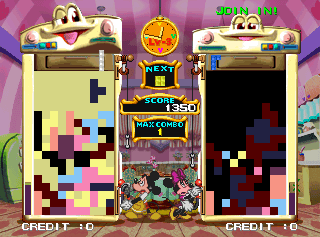
(It was confirmed that the Tetris Pieces on Magical Tetris don’t show due to protection, but we were still unable to locate the correct graphic data)
We also found out that a lot of the Aleck 64 dumps Guru had done in the past were bad, these were redumped by somebody else, which allowed quite a few other games in the driver to start working, they’re still makred as NOT WORKING as the underlying N64 emulation still has issues causing the games to not run at the correct speed or crash etc. tho.
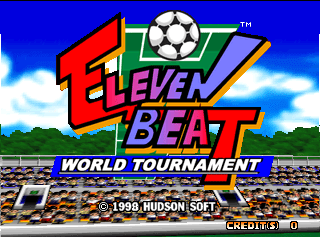
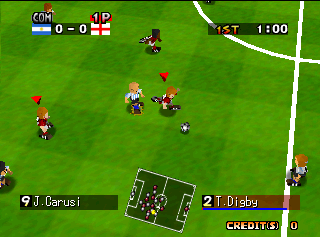
Royal Poker 2 looked promising at first, but stumped us with a ‘Secret Error’
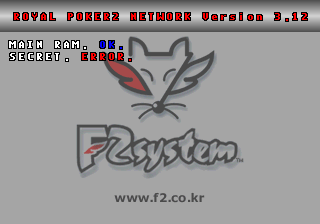
(‘Secret Error’ is as far as Royal Poker 2 gets)
Some progress was made on Data East’s Counter Steer, but it remains non-working, and we still don’t even have dumps of the colour PROMs from it.
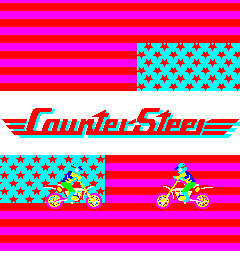
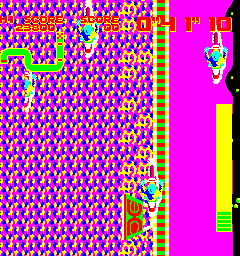
(Counter Steer is an early Data East title with rotating backgrounds, small steps of progress were made)
Malzak continues to cause problems, lots of improvements were made to the ‘primitive’ video chip it uses (one usually used for TV Teletext services) but somehow, even with improvements showing in other drivers in the non-arcade part of the project Malzak remains non-working, with broken collisions and some clearly incorrect visuals. Maybe one day.
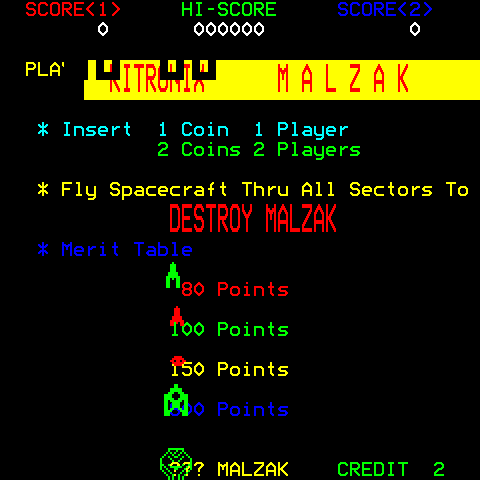
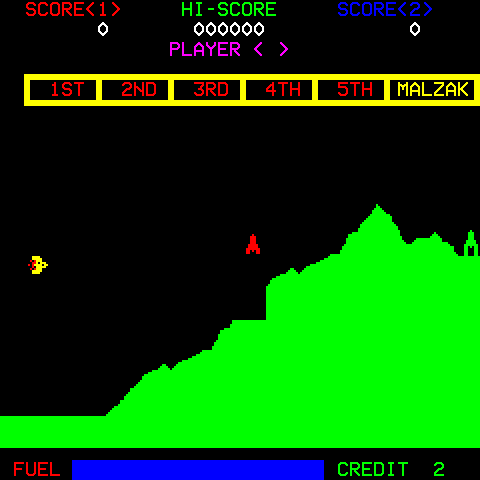
(Malzak is an obscure game that copies the gameplay of Scramble, but using very different hardware, it was made in New Zealand!)
You’ll Benefit Later
Other things in MAME were followed through until completion, however, the immediate benefits are less obvious than they should be. The understanding of the Sega encryption chip used on many Model 2, Model 3, ST-V, Hikaru and Naomi based titles was a major breakthrough, however as none of those platforms run especially well in MAME right now the improvements can be seen, but mainly mean that there’s a hurdle out of the way for when emulation of the platforms is improved as a whole at a later date.
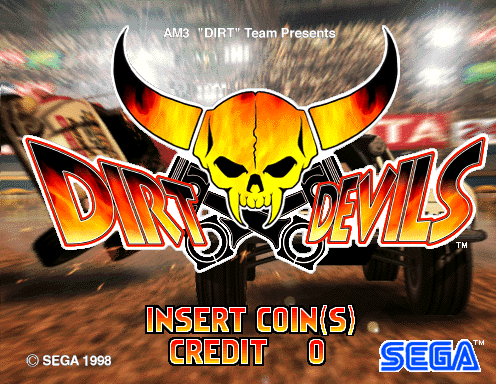
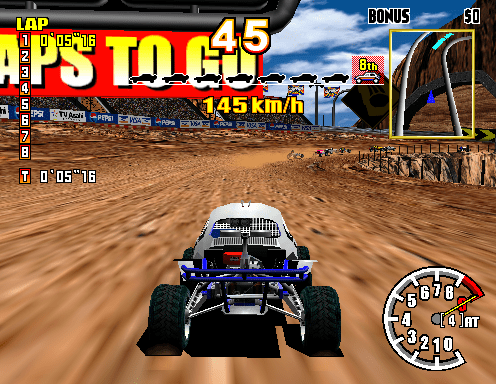
(The HUD graphics in Dirt Devils were decrypted)
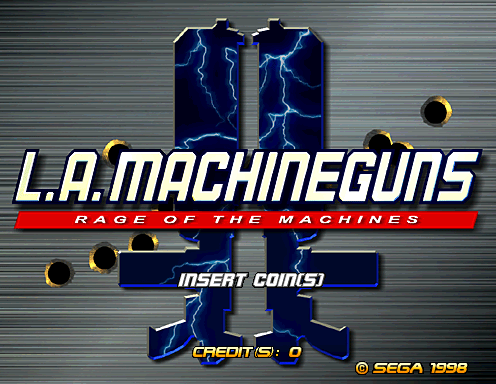
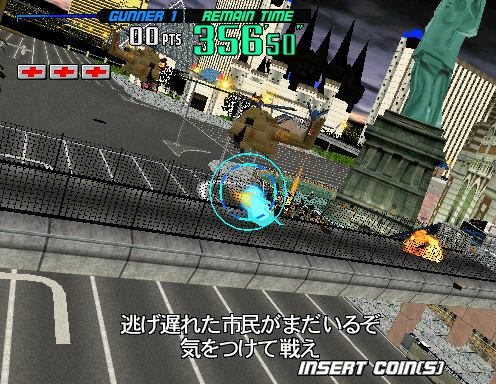
(as were the HUD graphics in LA Machineguns)
The most obvious benefits in MAME from this were with the ST-V games, and some Model 3 titles. For ST-V it allowed Final Fight Revenge to boot, although ultimately all that shows is that our ST-V emulation is severely lacking, there are countless video, sound and performance issues when running it.
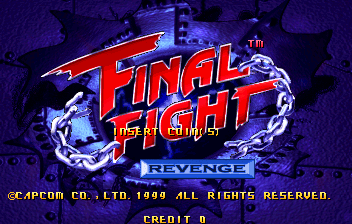

(The code of Final Fight Revenge was decrypted, allowing it to boot and be played, albeit with many glitches)
Elandoree

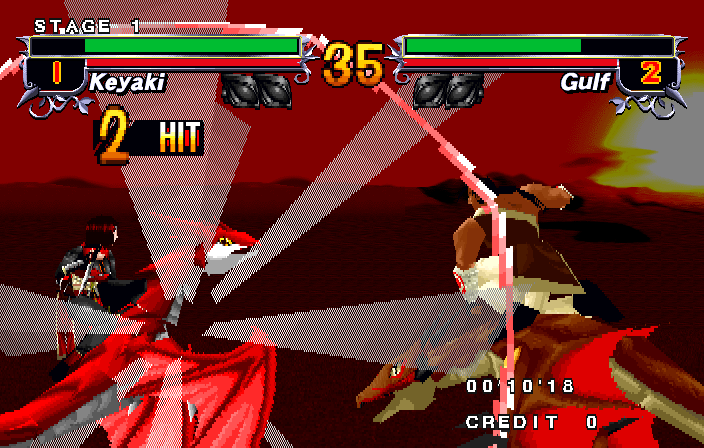
(The textures in Elandoree also benefited and are now correctly decrypted)
It also gave us non-corrupt graphics in Tecmo World Cup ’98, although again there are performance issues and an annoying logic bug that can cause the game to simply stall when a specific action with a Goalkeeper collecting the ball remains (it’s rare, but it is game-breaking)
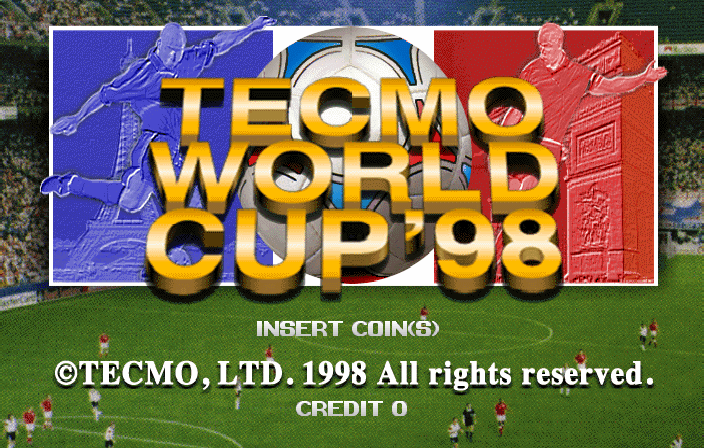
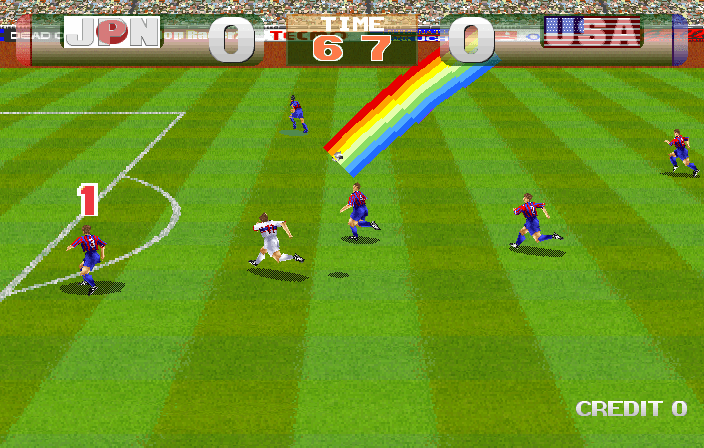
(The title screen of Tecmo World Cup 98 also now shows, although there’s a gamebreaking bug with one of the teams.)
Obviously once MAME does start running these games better you’ll be very happy to have this protection out of the way, furthermore it allows greater confidence when actually improving the driver because it rules out issues being caused by the device.
Significant Variations
Some games are easy to overlook or write-off as clones when in fact they’re not really clones at all. The Black Label version of CAVE’s DoDonPachi Dai-Fukkatsu is almost an entirely different game, tweaked in every way, including a complete new soundtrack.
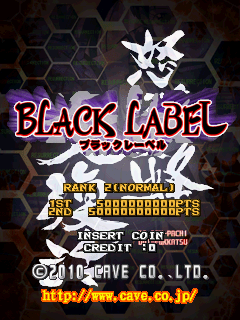
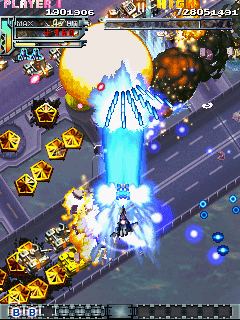
(DoDonPachi Dai-Fukkatsu Black Label is a very different version of the game, completely new music too!)
Capcom’s LED Storm Rally 2011 is another example of this, the Rally 2011 version of the game is actually a semi-aborted earlier release before it was re-worked into the version of Mad Gear / LED Storm that’s been supported in MAME for years. Weirdly in this instance the near universal opinion is that Rally 2011 is the superior game, to the point many people actually believed it to be the sequel / updated version rather than an earlier version it actually is.
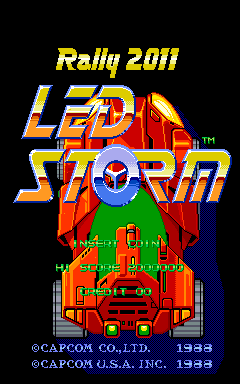
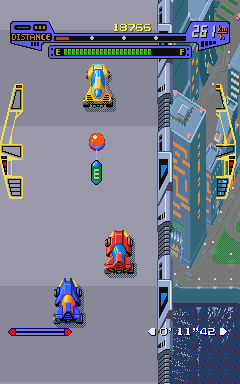
(LED Storm 2011 is the version on which all the home ports were based!)
2015 saw us unearth 2 versions of a Korean developed game called PuzzLove, a game which previously we’d never seen a PCB for. What’s interesting about this is that both versions of the game are actually quite significantly changed rather than being a simple case of the same game with a different region warning screen. One version of the game appears to be the original Korean release, there are still pieces of Korean text in places. The other release seems to be one created for export markets, presumably a later release, but weirdly it has a bug in the screen fade routines causing them to fade in a slightly off-colour way. While in this case the games are considered close enough to be called clones the way the gameplay works (for example, selecting which puzzle you play next) has been significantly altered from one release to the other.
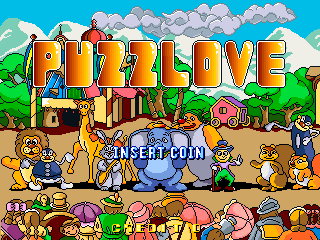
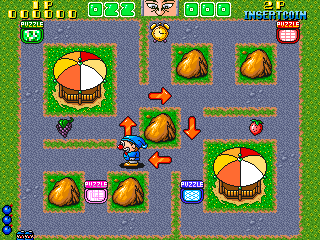
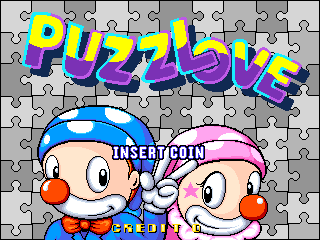
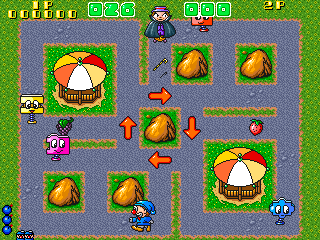
(Puzzlove, previously unemulated, had 2 very different versions turn up)
Meteors is a clone that almost slipped entirely under the radar (to the point I’m adding this coverage in 2023!) but it is a noteworthy one. It’s a version of a game better known as Space Force by Venture Line, but while Space Force is vertical, this version is horizontal, and this version is the one that caught the eye of Atari’s legal team back in the day for being too close to Asteroids. It is reported that Atari would end up losing the case.
At the time of writing it isn’t clear if this Meteors version is the original release of the game then licensed/sold to Venture Line, or if this is a later build and it was instead licensed from Venture Line. It is likely older than the parent Space Force set at least, as like all the other clones this lacks the enemy points table during the attract demo.
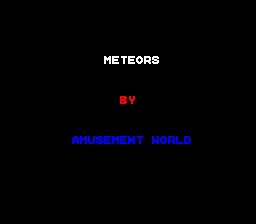
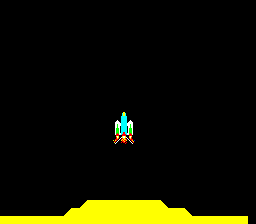
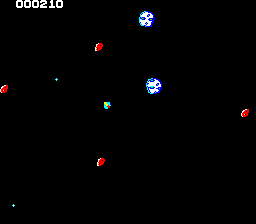
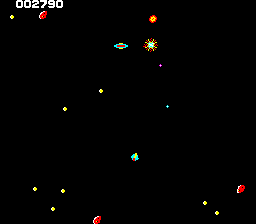
Useful Clones
Some clones are more important than they seem on the surface. I mistakenly announced in a previous writeup that Aaron’s EEPROM update had magically fixed Mr. Kicker from hanging, it had, but the reason it had fixed it is because it had actually completely prevented the game from writing anything to EEPROM at all, meaning changing the settings was impossible. This was because the new EEPROM code has approximate timings for the EEPROMs, you can’t write to them too fast etc. When combined with a processor where we don’t really have very accurate timings (in this case the Hyperstone, although you could say the same for many modern processors as there are so many things that affect performance) it was simply causing writes to not be allowed. Adding a workaround so that the EEPROM accepted faster timings (needed for quite a few other Hyperstone games to start saving their settings again as it turned out) re-broke the game, again causing it to write an invalid EEPROM which it was never able to fix.
Luckily a clone turned up, that clone was on a more traditional Hyperstone based board (the existing set looked more like a re-purposed gambling PCB) and strangely enough the new set doesn’t suffer from the problems of the previous set at all, it just works, setting savings and all, and even seems to have some bug fixes over the other one. Unfortunately the code is different enough that it doesn’t really provide hints at why the first set fails so badly, but having a set that really does work properly is good to know, even if most people probably didn’t notice it creep in.
A clone of Hexion turned up too, what’s interesting about it? well it’s a bootleg, but it’s a bootleg of a version we didn’t actually know about. The bootleg is of an Asian release, a release that was apparently entirely in English. Unfortunately the bootleggers took some liberties with the sound system, replacing the custom Konami chip with a generic OKI 6295 for sample playback, reducing the audio to simple loops (the original sound code is actually there and intact, but the chips aren’t present on the bootleg, so we don’t use it) but even so, it tells us that we need to keep our eyes our for a legitimate Asian release with original Konami labels.
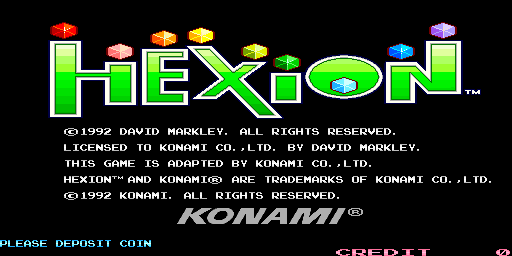
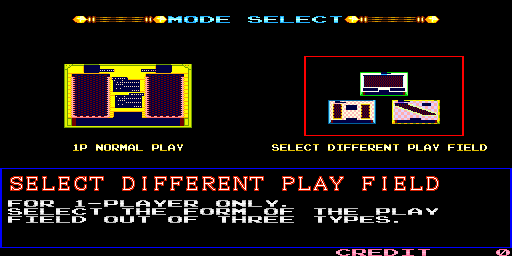
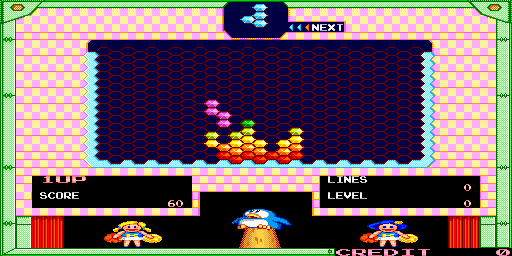
(A bootleg of an Asian version of Hexion suggests we’re missing an original)
Depending on your point of view the Adult / Non-Adult versions of games can be important clones too. Adult games generally aren’t considered very politically correct these days, so censored versions are often preferred. A version of Hot Bubble turned up with landscapes for backgrounds instead of nudity. I’m not entirely sure why it retained the title ‘Hot Bubble’ because unless Radar Telescopes are really your thing the images are no longer really ‘hot’ in any way, but it is a more family friendly version of the game.
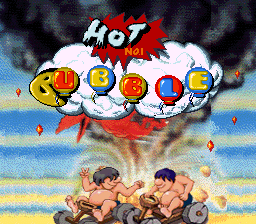
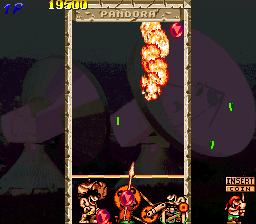
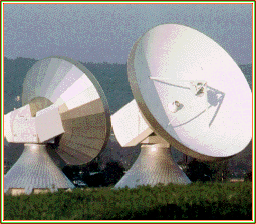
(Non-adult versions of games like Hot Bubble make them more family friendly)
A version of Yun Sung’s Wonder Stick was dumped which seems to fall into the same bracket, the existing set had explicit / nude images, the new set seems to be heads / faces instead.
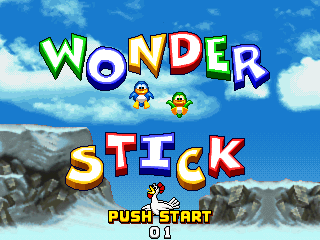
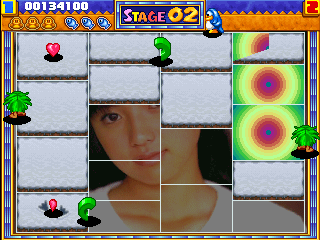
(a clone of Wonder Stick also uses less explicit pictures)
A version of Maya with various cartoon images instead of adult pictures was also
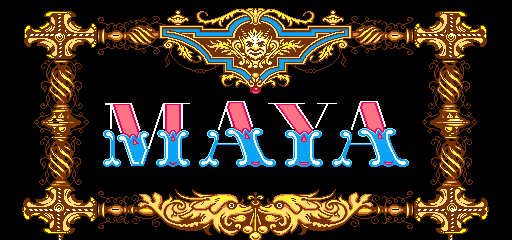
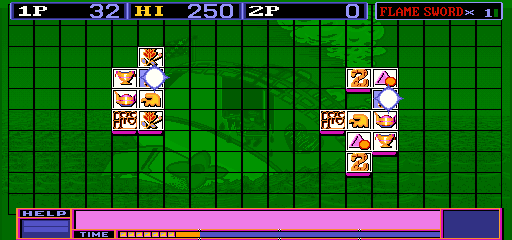
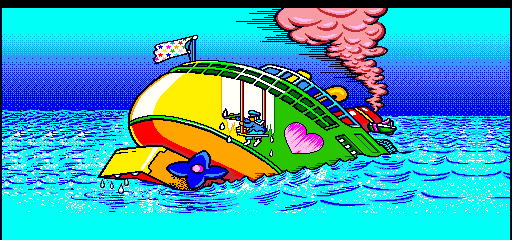
(the ‘clean’ version of Maya doesn’t have nudity, although some of the jokes in the cartoons are still adult in nature)
While it doesn’t share the exact same title the ‘Super Miss World’ game by Comad is very much the same game as ‘Miss World 96 Nude’ etc. but with more family friendly images too.
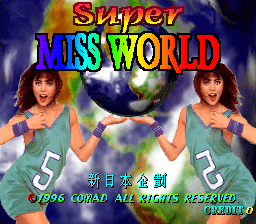
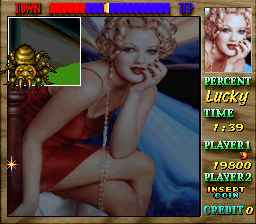
(Super Miss World is uses the same game base as Miss World 96 Nude, but without the nudity)
Things don’t always turn out quite like that however, sometimes the new pictures found in alt are no more or less explicit than the old ones, just different. This was the case for Sliver, where as set with different images was dumped. Sliver is an unremarkable game, except for one reason, it’s one of very few arcade games to have a hardware JPEG decoder chip on the PCB, and all the images are stored in the ROMs as JPEGs. The names of the women and their stats hasn’t changed, only the pictures.
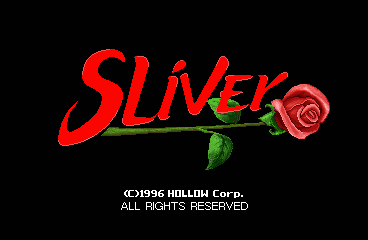
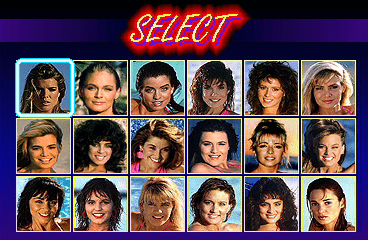
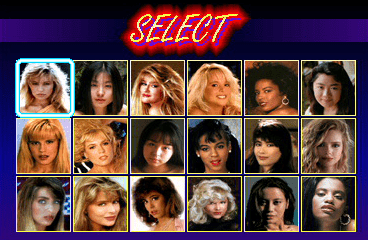
(A version of Sliver offers a different set of women, maybe for a different market.)
I’m probably pushing things here a little with the definition of ‘useful’ but sometimes bootlegs can be interesting at least. An Asian bootleg oF Battle Garegga surfaced, it’s called “Lei Shen Zhuan Thunder Deity Biography” and well, it swaps out the default selection of planes for the bonus / secret unlockable ones, which I guess is interesting to anybody who doesn’t know how to unlock them properly. It also seems to completely unbalance the game, but if you’ve ever played one of these silly bootlegs you’d already know that ;-) A similar bootleg ‘1945 Part II’ was added a previous year.
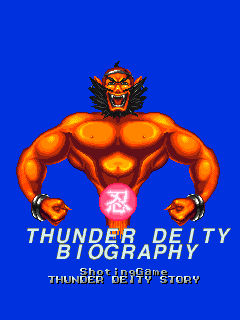
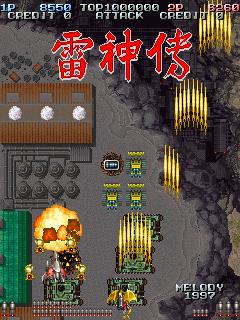
(A strange hack of Battle Garegga where the secret characters are used instead)
With the project being a bit more open and accepting these days a range of ‘desuicide’ sets for the Sega encrypted games were also added, these are all marked as bootlegs, because at the end of the day they’re NOT legitimate code, and could result in errors compared to running the original encrypted ROMs using the original encrypted CPU on your PCB, but, for already dead boards they have a legitimate use, and are being used quite widely at this point.
For similar reasons the ‘enhanced’ version of Out Run was also added, amongst the other fixes present in this unofficial modified version is the fixing of Free Play mode so that it plays a full attract demo. While that might not sound too significant the business model for a lot of arcades these days is to charge on entry and have the machines on Free Play, or simply make money from other activities at the location. Without the modifications Out Run would not cycle any kind of attract loop which would make it more prone to causing screen burn on the CRTs etc. Not what any operator wants, thus why many installed this unofficial modification.

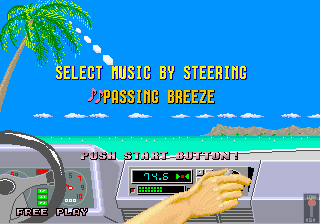
(Outrun Enhanced is an unofficial bugfixed version of the game that is finding its way into arcades)
Tecmo’s World Cup ’90 is a game that few people want to play today, and one of the darker sides of the arcade scene has always been bootleg conversions. A version of Pacman was created many years ago, actually by a former member of the MAME team as a bit of fun, as something to do with his World Cup ’90 board so that it wasn’t just gathering dust. Somehow this set actually ended up being used on PCBs in some Spanish bars tho! As a result, via a rather roundabout way it too has ended up being supported in MAME. Compared to the original the screen layout is changed a bit due to different resolutions, and the sound is quite horrible as it’s just samples of the original sounds played back through a cheap sample playback chip.
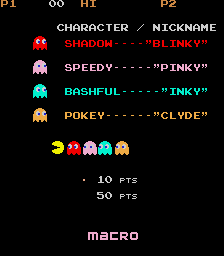
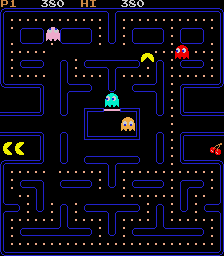
(It’s PacMan, but it’s running on World Cup ’90 hardware!)
Double Up!
Sega shipped a handful of games using a PCB configuration that consisted of multiple stacks of PCBs with a direct bridge board between them in order to support multiple screens. These differ from traditional games that used a link cable in that both CPUs have direct access to a pool of shared RAM contained on the bridge board rather than talking to each other via a serial cable. This also means that to run them properly we have to emulate both stacks of PCBs and the shared RAM at the same time, because you can’t simply expose the communication ports on each end.
There were 2 System 32 games known to use this model; Air Rescue and F1 Exhaust Note (it’s possible F1 Super Lap uses a hybrid system with cable link for >2 players, I need to check)
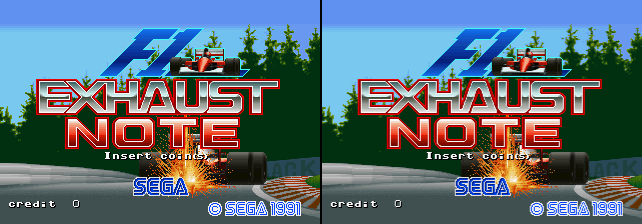
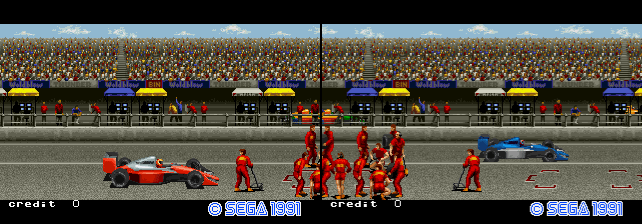

(The dual PCB stack for F1 Exhaust Note allows it to run without hacks)
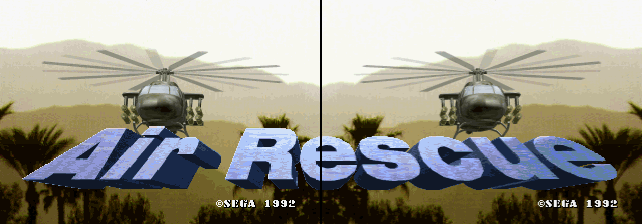
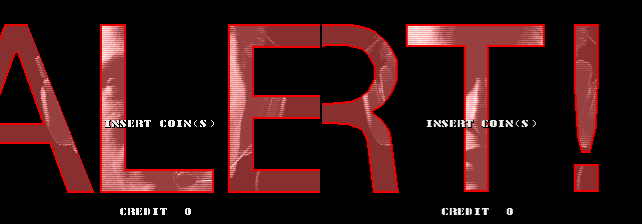
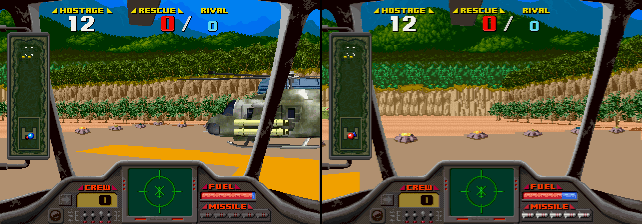
(Air Rescue gained a proper title screen and attract sequence the same way)
There was also an older game on the X-Board platform, GP Rider, which feels very much like part of the same series as F1 Exhaust Note due to similar presentation.

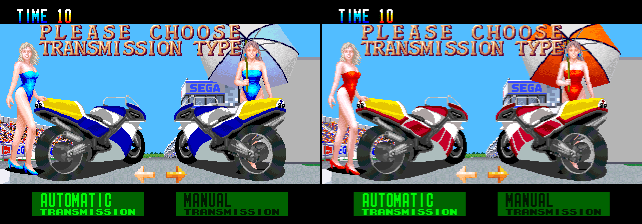
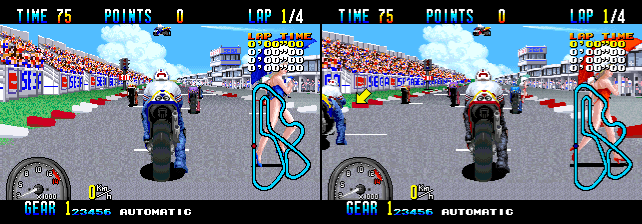
(GP Rider integrates the 2 screens less tightly, but was also only sold as a dual PCB setup with bridge board)
Properly emulating this setup in each of the games allowed for the removal of some hacks, and also fixed the attract modes, which either previously didn’t play, or didn’t behave the same way to the Demo Sounds dipswitches as the real PCBs. In the case of Air Rescue and F1 Exhaust Note it also exposed some missing / mishandled System 32 features such as improper support for the tilemap flipping.
Sega weren’t the only one with dual screen setups, although in the case of Konami a lot of the Dual Screen games put out actually abused the output of a single board rather than doubling up PCBs, or doubling up video chips. Run and Gun is one such game, the Dual Screen mode is done by de-multiplexing a 60hz signal, giving 30fps of video to two screens, driven from a single PCB and single set of video chips and banking the RAM every other frame. While Run and Gun has been marked as working in MAME for a while it has never REALLY worked, even running in a single screen configuration (where you get smoother animation, because it doesn’t have to split the signal) it would give you the option to ‘play against the other screen’ when it shouldn’t have been giving that option (selecting it would cause the game to hang) That’s all fixed now, and the game is playable in both modes with some minor glitches.


(Konami’s dual screen tech was a bit different, and much more annoying to emulate, Run and Gun can now be played in 4 player mode tho)
Vs. Balloon Fight has been in MAME for a long time, but apparently it’s never actually worked properly if you attempted to play it as a dual screen game, with the screens quickly desyncing, that was fixed.
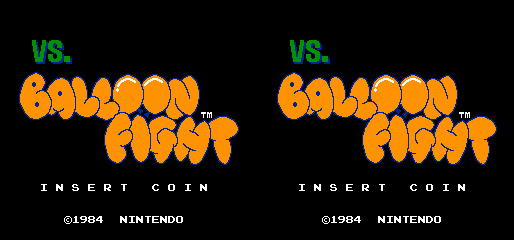
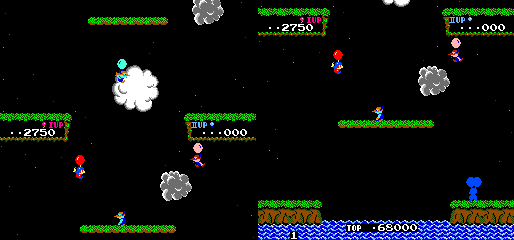
(Nintendo’s Balloon Fight quickly went out of sync in old versions, it no longer does)
The standalone version of Vs. Janshi Brandnew Stars was also a dual screen game, in that case the driver was lacking buttons for the 2nd player, those were added.
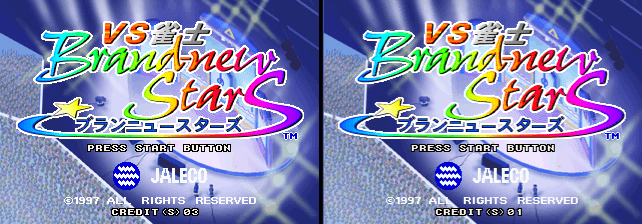
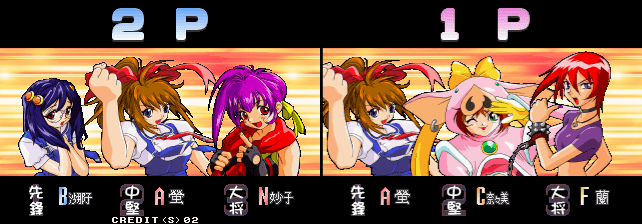
(The dedicated PCB version of Vs. Janshi Brandnew Stars now allows both players to play)
Prototypes
Recent years have been kind to us, with a large number of prototypes showing up, often with significant differences to the originals. In terms of arcade prototypes 2015 represents a much quieter period. The most significant arcade prototype that’s now supported is Kaneko’s Pack’n Bang Bang, as it appears the game never made it to market.
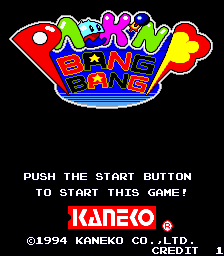
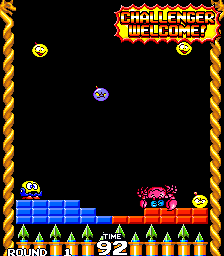
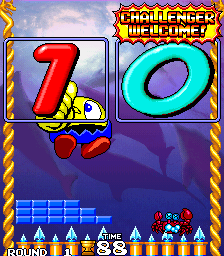
(Pack’n Bang Bang is a prototype of a Kaneko game that appears to not have made it to market, as a proto it has several bugs)
Additional work was done on Race Drivin’ Panorama to bring it to working state.


(Race Drivin’ Panorama was an ambitious idea by Atari at the time, mixing different kinds of board for the main screen and side screens)
Some prototypes of Atomiswave games (The Rumble Fish 2) and some Naomi titles were added, but those don’t really run well enough in MAME yet so might prove more interesting to explore later down the line, I’m not really sure by how much it differs from the released version either, maybe somebody else could tell you tho.
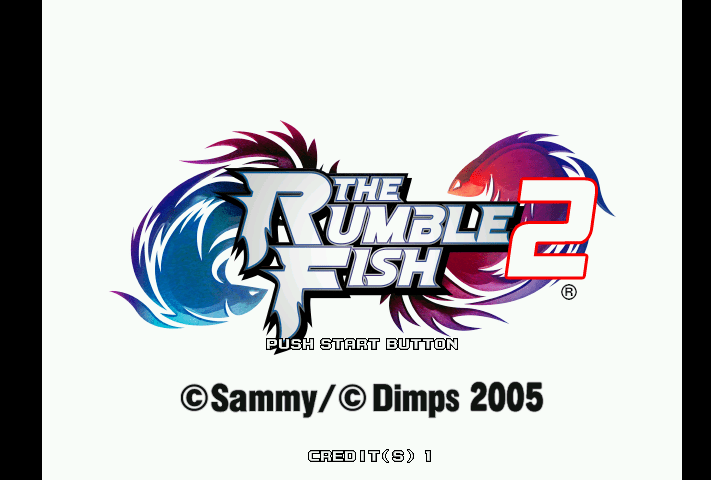
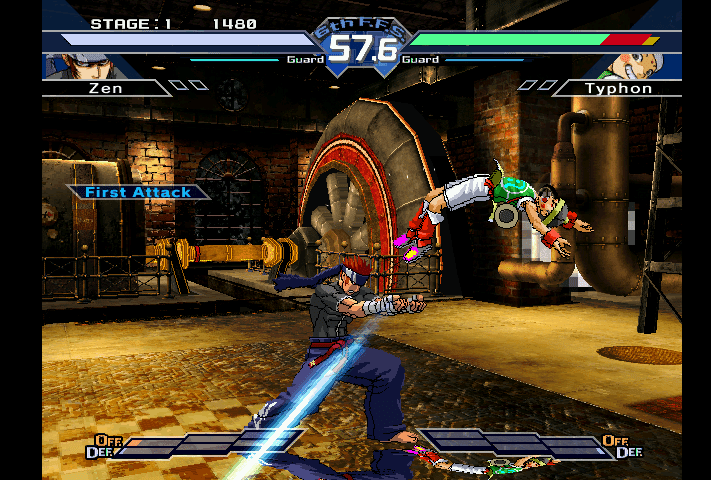
(I’m not sure what is changed with some of the Atomiswave prototypes)
R & T (or Rit & Tam) is an odd one, it looks like it could be a prototype of Rod Land, but the title screen lacks any copyright details which is unusual for a prototype, so it could also be a hack, or a hacked prototype. It differs from the versions we have in a number of other ways tho, for example, lacking different level layouts for the ‘mode 2’ the game has (enabled via dipswitch) Sound is also pretty messed up, but it was on the PCB too. Not honestly sure what to make of this one!
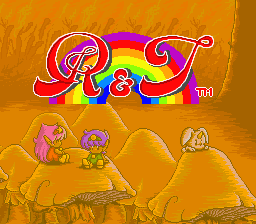
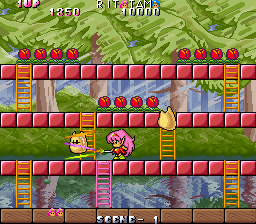
(R & T, bootleg, prototype, bootleg of a prototype? I’m not sure)
.. or just alt revisions?
Sometimes it’s difficult to tell if a ‘prototype’ is actually a prototype or simply a previously undumped clone of a game, that would have turned up of it’s own accord on a distributed board given enough time. A number of ‘review’ copies of games that were added over the course of the year fall into this category. Typically these boards had hardware mods on them to allow the game to be paused, a feature very useful for reviewers as it allowed for screenshots to be captured easily with no motion blur etc. Several of these sets turned out to be identical to the release versions, the code was a perfect match, one, Asura Buster actually had code modifications to control the pause feature with an ingame button rather than a PCB mod, that one we can say for sure was a ‘different’ revision of the game, specifically for that purpose.
Others, like Ultra X Weapons ended up showing a NEWER date on the ‘review’ copy than the set we already had, and don’t seem to contain any additional modifications for review purposes. That is where things become more difficult to categorize, as it’s possible the review copy was indeed simply a newer version of the game that we didn’t know about before, rather than anything that had been modded especially for review purposes.
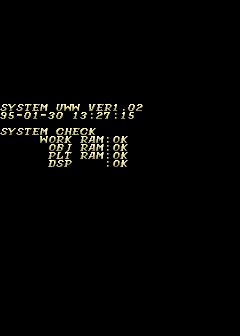
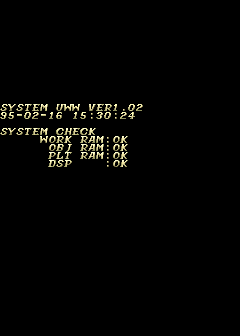
(the review copy of Ultra X weapons might just be a newer revision)
Generally Rare
Star Trek, an odd game on Head On hardware that has nothing to do with the TV series is possibly one of the most obscure findings of the year. No real information exists on the game, and it’s not especially good, but is definitely a unique title, likely from Sidam.
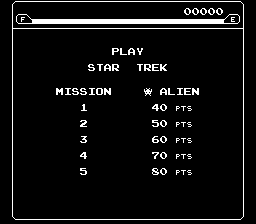
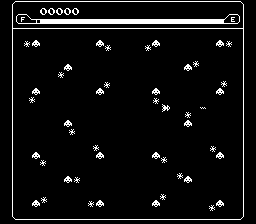
(Star Trek, nothing to do with the TV series, instead a very rare, but frustrating old black and white game)
Korean
Semicom’s Gaia – Last Choice of Earth finally turned up, but with a bit of a surprise, it was a horizontal game, not the vertical one shown on all advertising material we’d seen before for it.
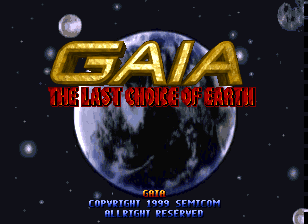
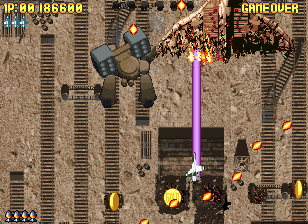
(Gaia probably won’t be your first choice if looking for a shooter to play, the title is apt.)
Ma Cheon Ru is another Semicom game, mainly noteworthy for having a nearly impossible to control mini-game where you need to rotate the joystick in a perfect circle, it barely works with a real stick, it’s asking the impossible on a keyboard.
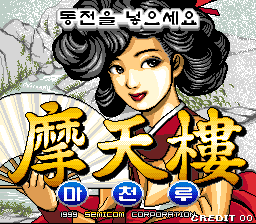
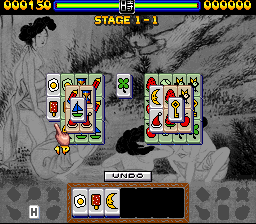
(Ma Cheon Ru is a nice little tile matching game, the mini-games aren’t great tho.)
Yun Sung’s Castle of Dracula takes inspiration from Taito’s Plotting but the execution leaves a lot to be desired.
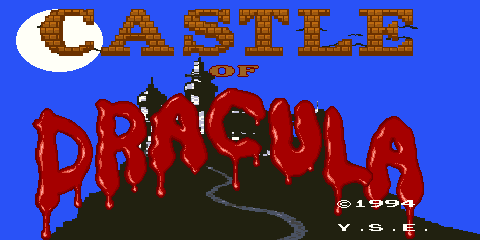
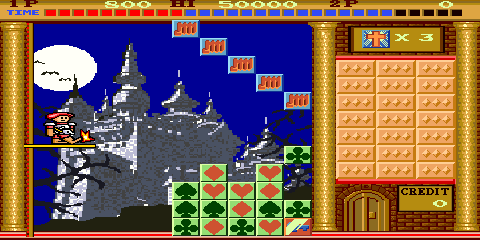
(Castle of Dracula is a poorly executed take on Taito’s Plotting)
Come Back Toto is a throwback to earlier years of MAME development when we were finding vast quantities of Korean games that were actually just hacks of other titles. In this case it’s an elaborate hack of Snow Bros. Doesn’t do anything special, but if you enjoy Snow Bros gameplay and wanted to see some new levels I guess it served a purpose.
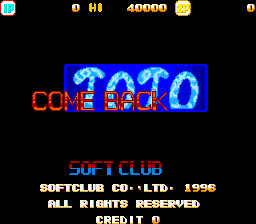
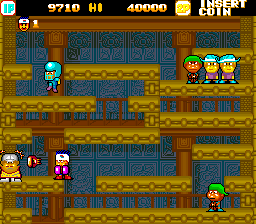
(Come Back Toto is actually just a reskin of Snow Bros. with new levels etc.)
European
While the majority of big name arcade developers were based in either Japan or the US, the European scene was an important one too.
Spider is a qix style game, previously only known to have a shareware version on the PC it was surprising to see it turn up on a dedicated arcade PCB. The version we have uses various cars as background pictures, apparently the PC versions have more adult oriented images, so it’s possible other PCB versions exist too.
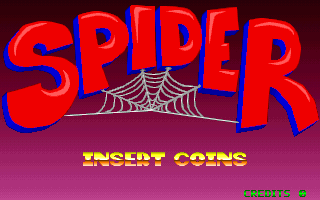
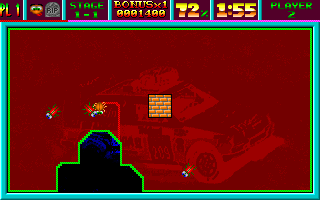
(Spider is a decent take on Qix from a Spanish developer, with a unique twist in that you only have a limited length of web for each span)
Spider was also important because it revealed key information about how the video hardware of Table Tennis Champions worked.
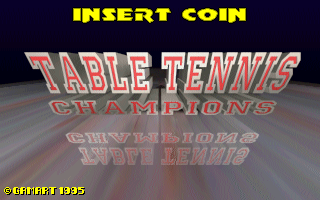
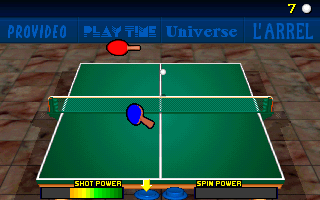
(Table Tennis Champions video emulation had frustrated us for a few years, decent enough Table Tennis game that gets too difficult too quickly)
Another stroke of luck saw an unprotected version of Gaelco’s Glass turn up in Korea. The version that showed up is censored compared to the non Korean release, and is based on the 1.1 version of the game which actually seems to remove some features compared to the original 1.0 release, but it represents the first time the game is playable in MAME due to the protection on the rest of the sets causing major problems.
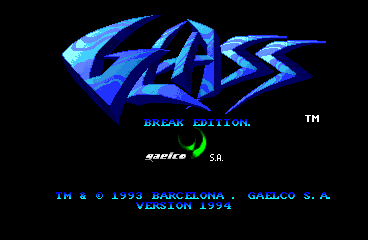

(Unprotected Gaelco games are rare, so finding this version of Glass was a surprise.)
Creepy Crawly
From one Spider to a completely different kind of Spider, we saw some progress on the Sega ‘Spider’ system, which happens to just be another Dreamcast / Naomi derived platform. The only game to boot in MAME is ‘Tetris Giant’ but even that crashes after the title screen due to bugs in either our SH4 or Dreamcast emulation. It runs better in other emulators.
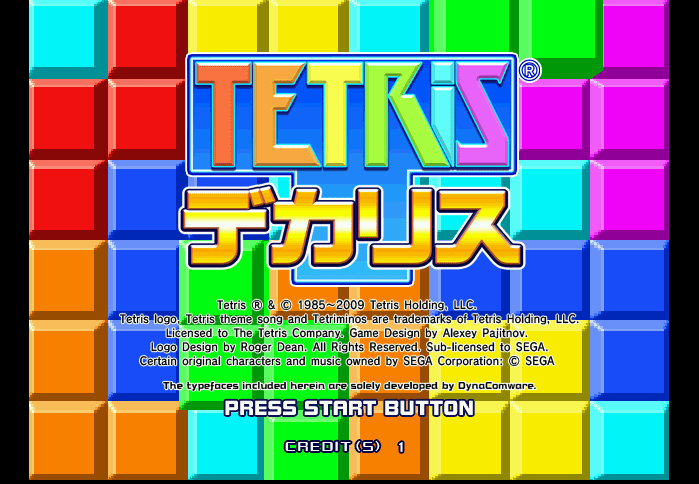
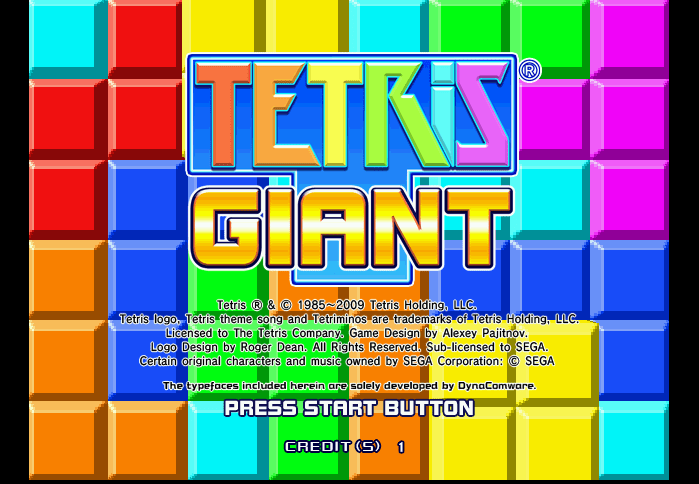
(Not yet working, but progress was made on Sega’s ‘SP’ system)
What’s interesting about the platform is that most of the other games on it use an RFID based device to limit the number of plays any arcade machine can have, this kind of system allows the manufacturers to ‘double dip’ in terms of making a profit out of the machines as once the chip has expired the machine can no longer be coined up. I guess for medal games it does make sense in that the number of credits available can be tied to the number of medals (which would avoid machines being stocked up with alternate / 3rd party prizes) but still, looks like a horrible system for squeezing already struggling operators out of even more cash.
Redemption
Redemption games, aside from the previously covered Sonic ones, remain an area a large majority of the MAME userbase have little interest in seeing progress on, but at the same time remain a big part of where progress is actually happening; this widely owes to there being so many of them and MAME’s coverage playing catch-up as more of them surface and end up being emulated.
A number of machines developed by Sigma lead the way in terms of redemption titles added in 2015 with titles such as ‘Burning Sanrinsya – Burning Tricycle’ and ‘Transformers Beast Wars II’ providing an insight into what was produced in the mid to late 90s, although it’s likely many more titles exist on the same hardware platform that are not yet dumped.
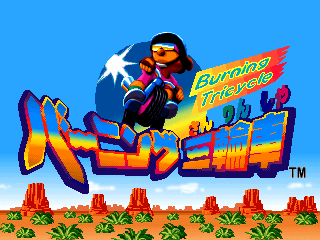
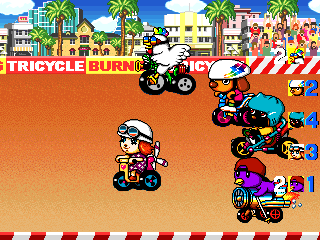
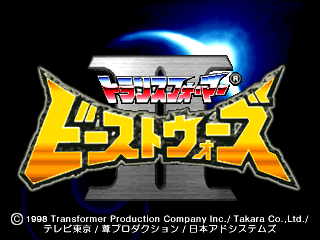
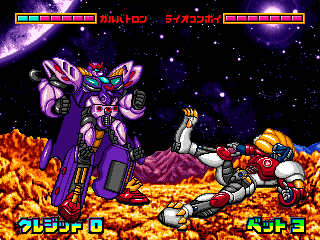
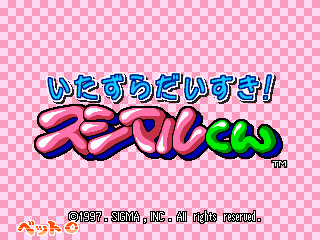
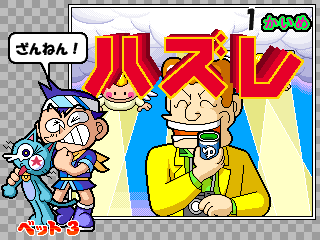
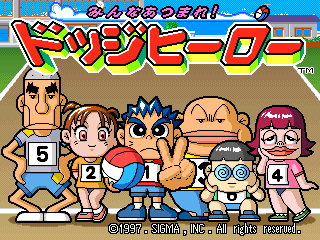
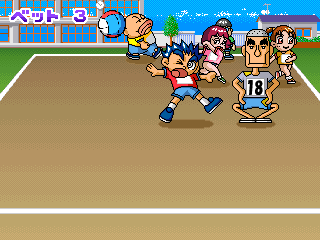
Dash Hero was also added, but marked as NOT WORKING due to inputs not being very responsive.
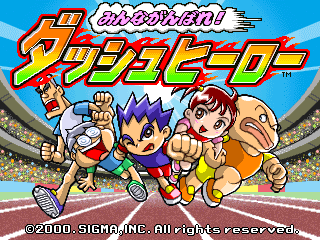
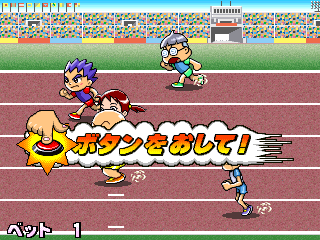
Flagging
One of the more ambitious redemption titles added was Captain Flag, a game where you must respond to what the game says by pressing buttons to raise or lower flags. The version we have is Japanese, so all the voices and onscreen text are Japanese, sources do suggest an English version exists, but we don’t have it yet. There’s also a ‘VS’ version which seems to be a sequel, again not dumped. These things tend to not be easy to come by as they’re usually sold together with the cabinets (as separated they’re simply non-functional) which significantly increases shipping costs, it also makes it more likely for them to have been scrapped as they take up significantly more space than just storing a PCB away somewhere!
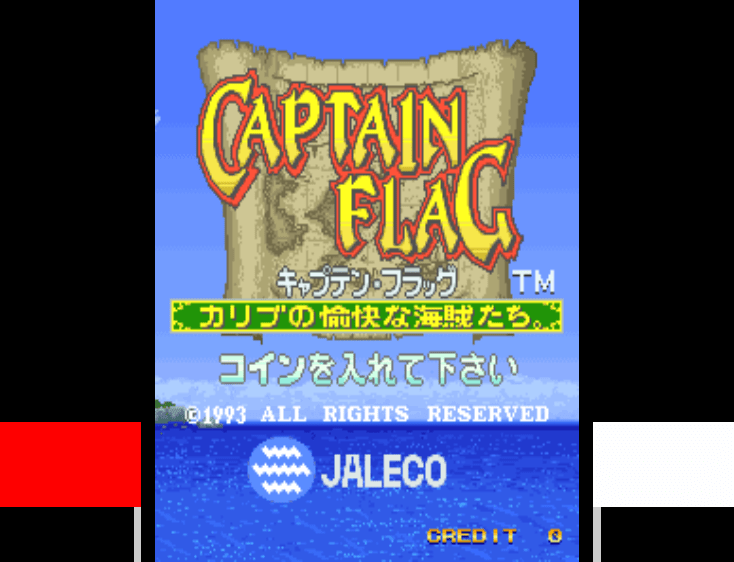
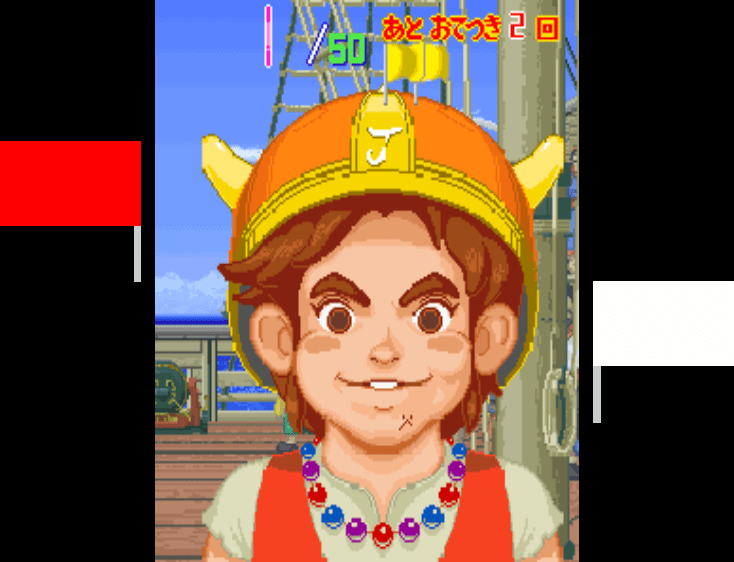
Gambling
Things are often unclear in the shady world of gambling, it’s one reason why it’s so important we try to document what we can of it. New Cherry Gold 99 is a Cherry Master style game, it uses graphics that appear to have been taken from ‘Super Cherry Master’ but we’ve never seen a ‘Super Cherry Master’ running on a Z80, so it might be a rewritten piece of code, or bootlegged from a version we simply don’t have. For the *actual* Super Cherry Master we still don’t have a dump of the GFX rom, which is an unmarked mask ROM on the PCB everybody apparently missed.
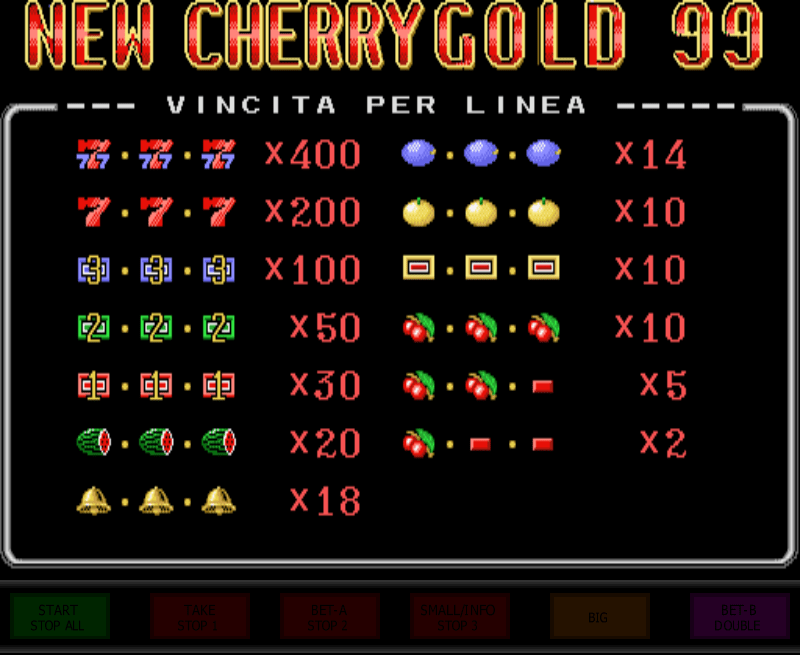
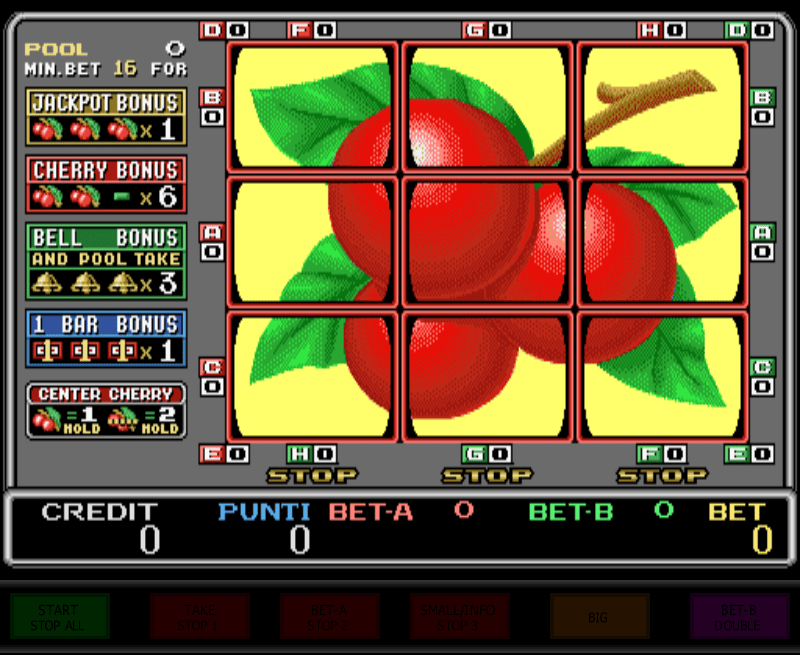
Some Mahjong games are technically gambling games too, it seems every culture had their own take on gambling, and for Japanese / Asian markets the ‘BET’ style Mahjong games were a huge part of it. It’s been a while since any significant number were added, 2015 doesn’t change that with 3 new Mahjong titles trickling through, all of them appear to be BET style.
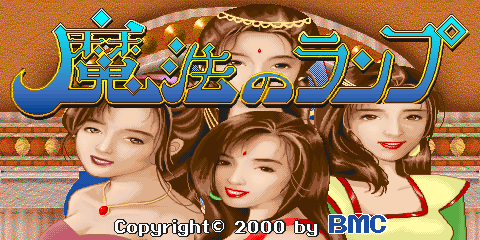
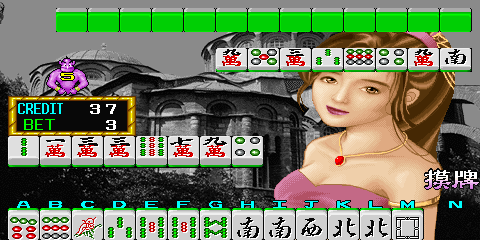
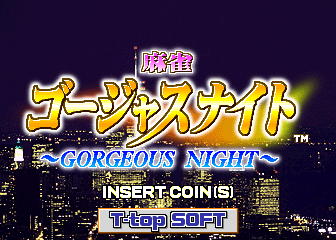
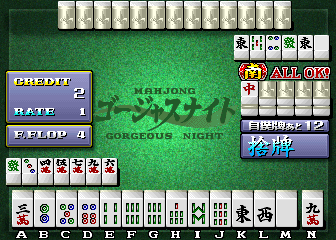
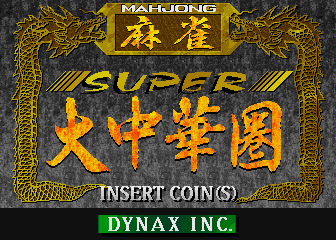
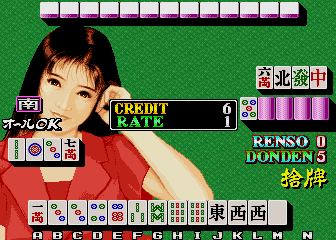
Visco’s The Dealer is a well presented card game.
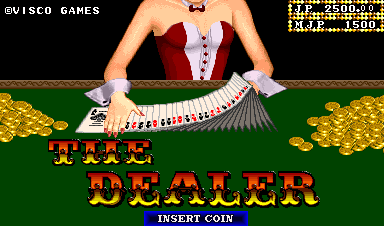
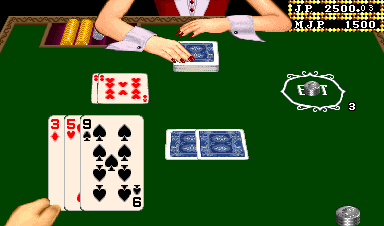
Mini-Boy 7 takes a more minimal approach, but does give you 7 games to play with.
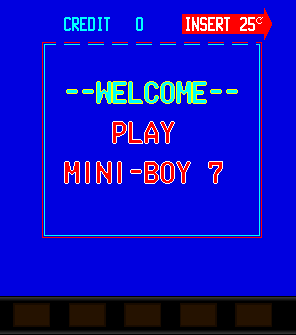
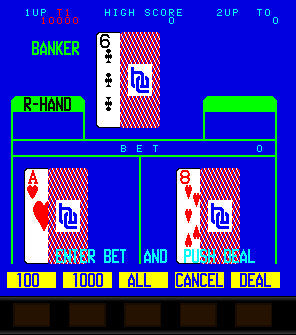
Another Sigma platform, another game, ‘Super 8 Ways FC (Fruit combination)’ it’s still marked as NOT WORKING, but you do seem to be able to play it to some extent at least.
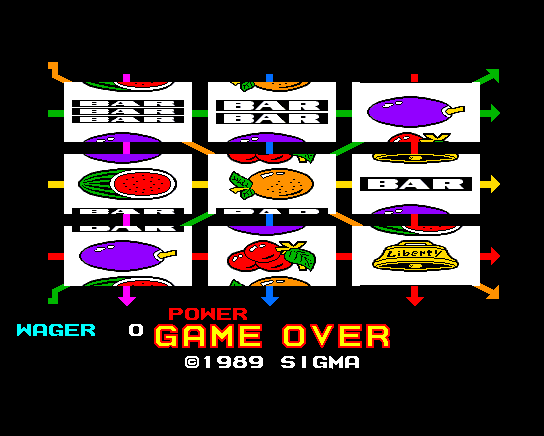
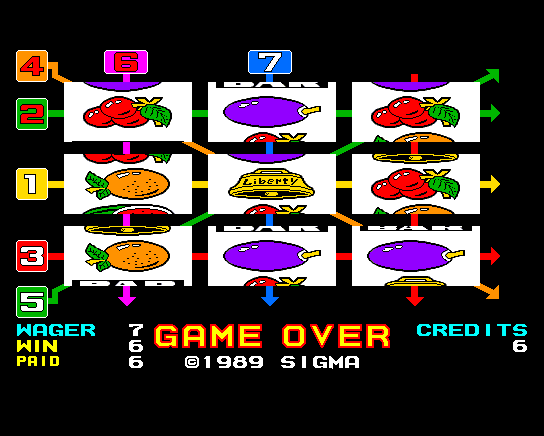
Subsino produced a large number of gambling titles of varying quality, and unlikely themes.. Panda Train? Ok…
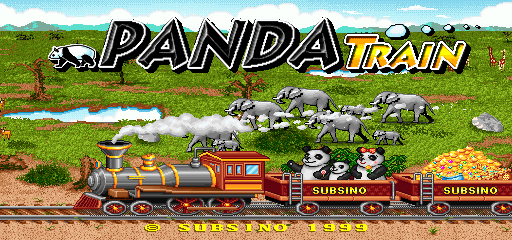
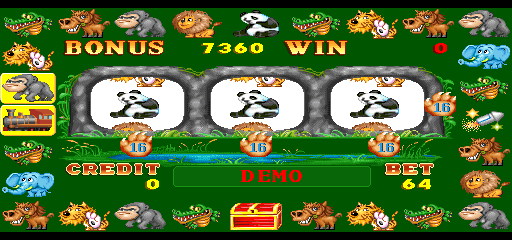
Another video slot machine, Endless Riches runs on rather advanced Seta hardware, meaning it can pull of some impressive looking graphics for the type of game it is.
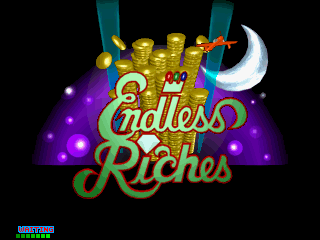
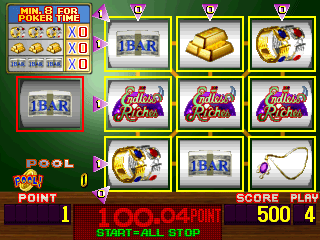
When it comes to some of the bigger manufacturers we’re still lacking many of the gambling games that were produced. Konami is a fine example of this, for the PowerPC based endeavour platform we have a handful of sets, but most of them consist of only dumps of the program roms when in reality most of the games should have a large FLASH roms and sample roms. For one set, Enchanted Lamp, we do have a dump of a Russian version which includes the Flash rom, although it fails the game checksum so is probably mismatched for the set we have, even then we lack the sound roms tho. The other thing about these games is that they do very intensive hardware checks, and require everything to pass before they operate. Some work was done with the Enchanted Lamp, but as you can see it still fails many, many things. It would be nice to actually see complete dumps for some of the games on this platform.
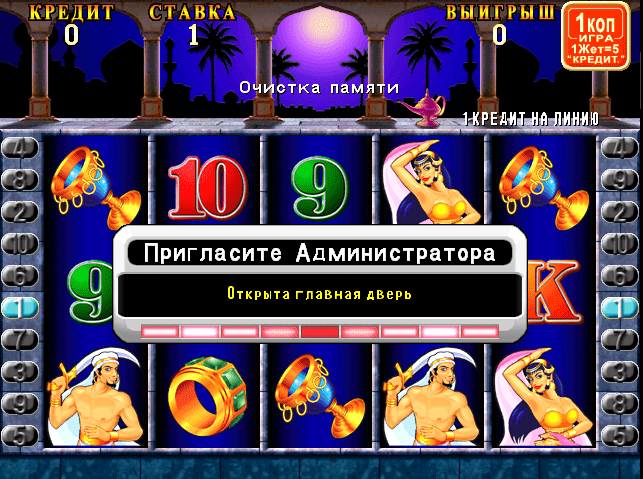

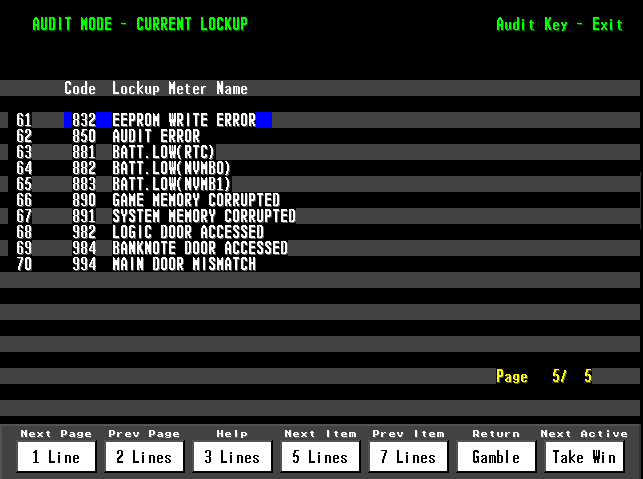
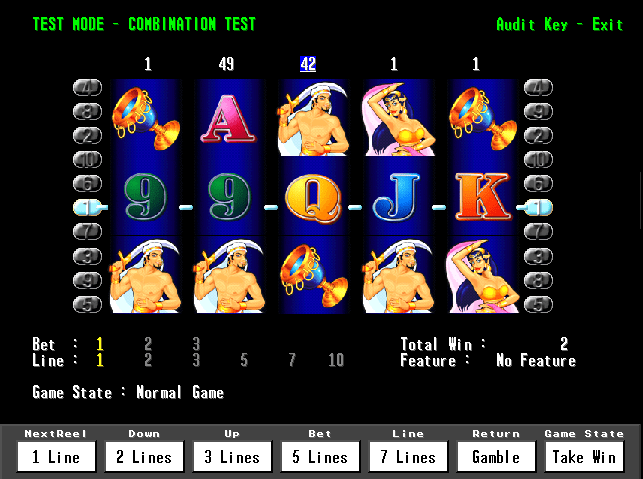
We seem to be seeing an increasing number of titles simply called ‘Multi Game’ or having similarly uninspiring titles. An Italian gambling board found last year carries on this tradition. It took a bit of work to get this booting because the game requires you to enter a ‘secret’ init code in the service mode, there are other problems which prevent it from being marked as working yet tho.
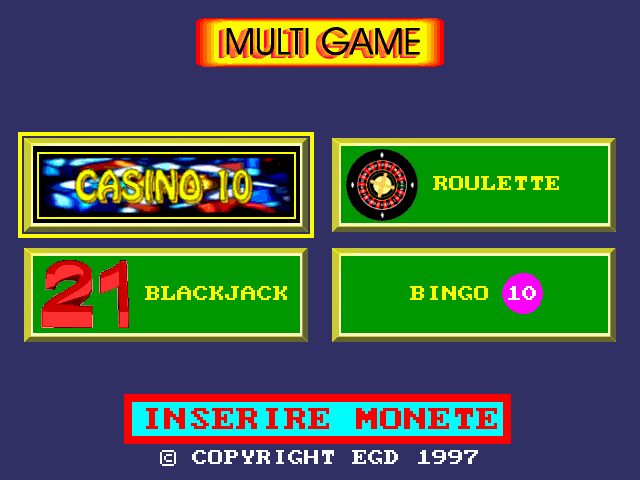
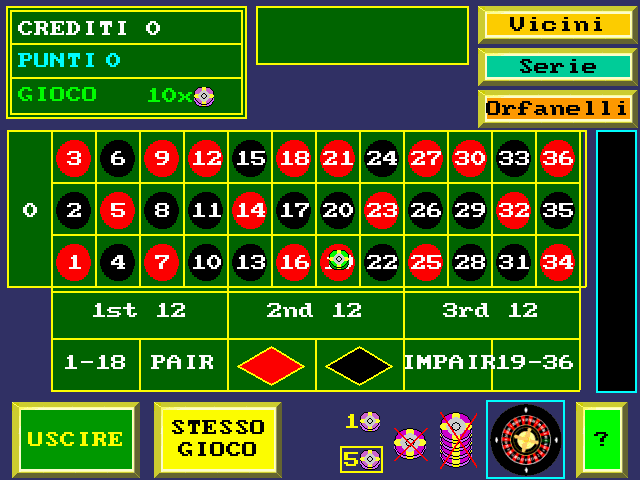
We’re not 100% sure of the title on this one, but for now we’re calling it Fever Pitch, it’s a game on Aristocrat MK IV (4) hardware.
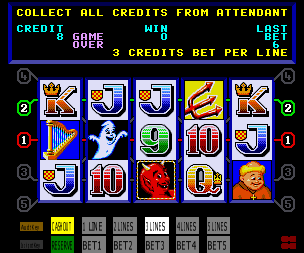
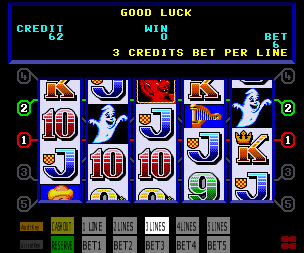
A recent theme for the last few years has been the addition of a lot of ‘Player Edge Plus’ sets, too many to possibly cover here without really knowing the difference between them.
Gambling Themed
Not all games that look like gambling titles actually are, quite a few of them just share a theme, this surprises me considering how much gambling games seem to be hated in general (especially under emulation) due to being pointless titles with no real gameplay and no payout, but they remain to this day popular enough for machines which are just as unfair, and feature no payout whatsoever to be produced…
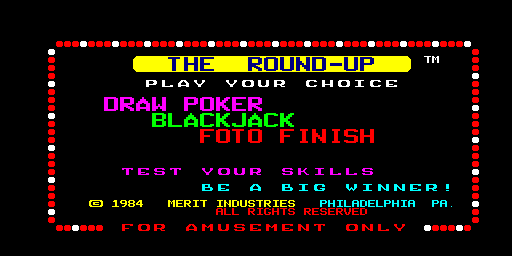
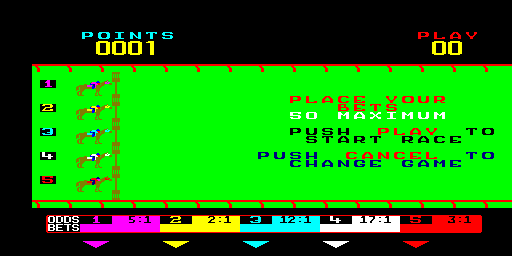
Barely Worthwhile
The most depressing thing about the games in this section is that from a hardware perspective, and what they taught us (or could teach us) perspective they’re actually some of the more interesting things we’ve encountered over the year, but beyond that they’re not really that interesting. Sega’s Aqua Stage for example is a coin pusher / gambling type machine running on the same hardware as Cool Riders; for a long time we thought Cool Riders was the only game on that platform so hearing that there was another title on the hardware was actually exciting, and the fact that it doesn’t work properly yet means we still have things to learn about this hardware (it showed us at the very least that the hardware is a LOT more configurable than Cool Riders ever indicated)
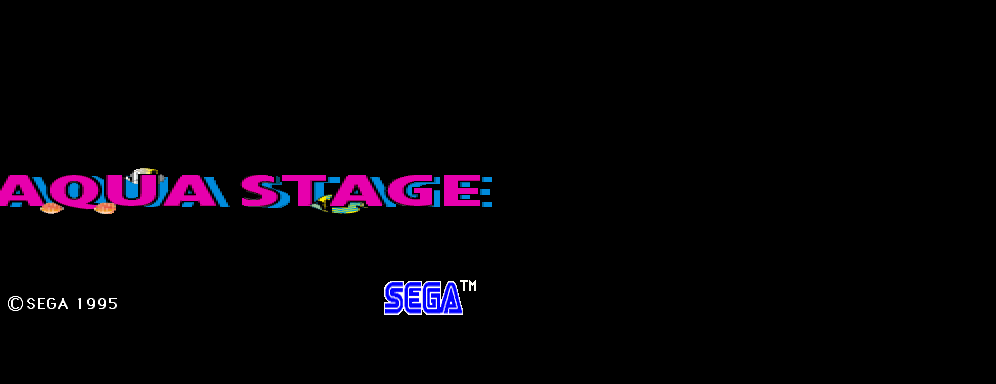
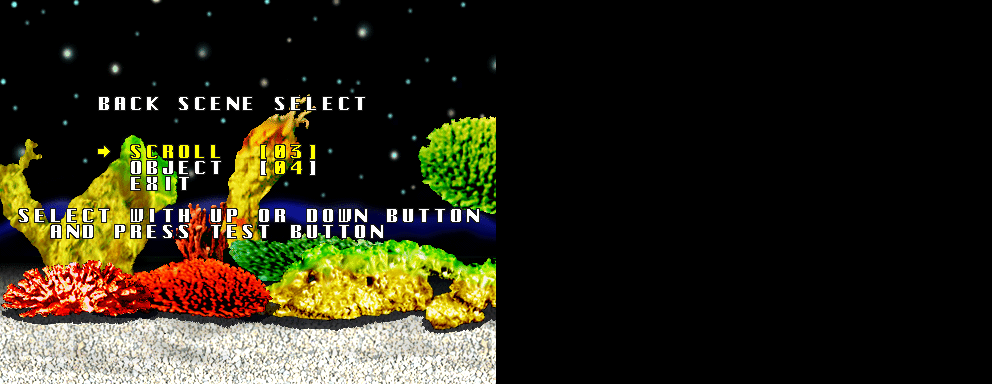
Some things come up that you really have to question why actually existed at all. Trivia R Us is one such ‘game’ which was found to be running on the same basic hardware as the Crystal System titles. Part of the game is an incredibly mundane ‘True’ or ‘False’ quiz, with no real gameplay structure, the other is a scrapbook of bad, and in many cases potentially offensive jokes with no gameplay at all, you just get to view a couple of random pieces of text. It was however interesting because it told us more about the Crystal System hardware, helping narrow down (but not entirely fix) the crash bugs on some other games.
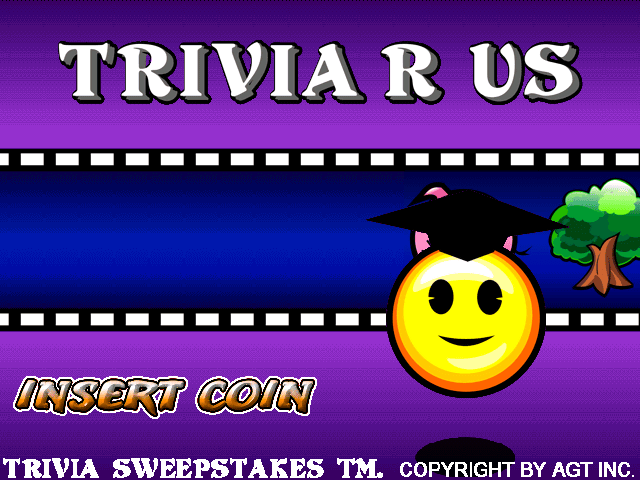
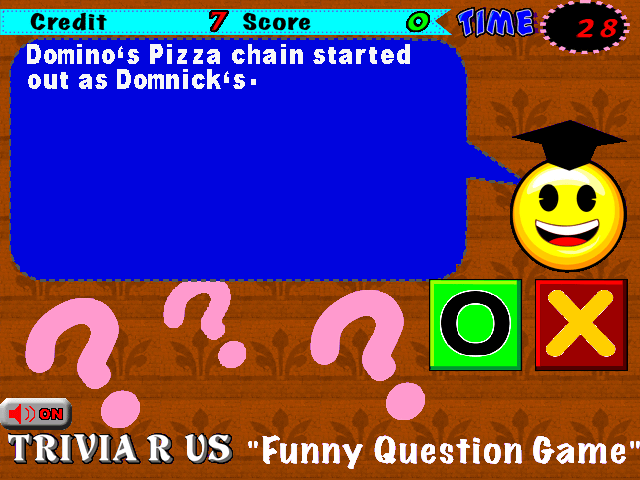
One of the games that was improved, but not entirely fixed was “Donggul Donggul Haerong” In that case disallowing certain ‘illegal’ CPU operations on memory seemed to mostly fix the game, but it will still occasionally fail, makes me think that maybe the bad operations were actually just a side-effect of something else going wrong and we’re limiting the damage rather than fixing the real problem. For this reason it remains marked as NOT WORKING.
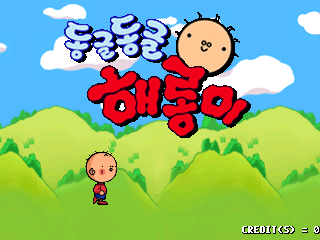
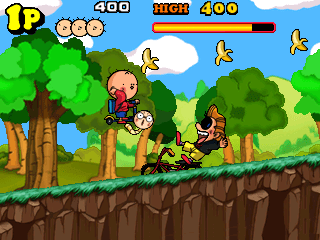
Photo printing machines are another part of MAME that under emulation really don’t offer much, and to be fair, don’t offer much in general in today’s world when everybody is doing the same on their smartphones, although the combination of running MAME on a smartphone and using the emulated machine instead of the native ones is a potentially interesting goal for somewhere down the line. ‘Joy Stand Private’ is a photo machine that was emulated in 2015, still marked as not working because there’s no current way for you to get an photo in, or a printed image out, it does still allow you to operate the background selection, text selection etc. parts. The actual hardware this runs on is unique, and one of the few true reverse engineering challenges of the year.

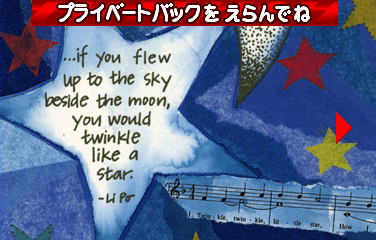
Unexpected Regions
We’ve known about Sega’s Car Hunt for a long time but until 2015 it had remained elusive. When it did turn up it ended up being a French romset, a Vic Dual hardware game, a 2-in-1 with a version Deep Scan. For a Japanese developed game it’s quite an oddity for the first discovered version to be neither a Japanese or World / Export release, and compared to many markets the French market definitely wasn’t the biggest.
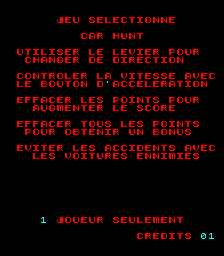
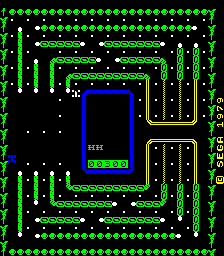
While not ENTIRELY unexpected the French and Spanish speech versions of Berzerk were a nice find. ALL versions of the game support 4 languages for the text; English, French, Spanish and German. We’d previously found a version of the game with German speech (which fits the title very well) but considering the reported cost of putting together the speech roms for the game back in the day it did surprise me when we discovered that there really were versions with speech in the other two languages, both were found in quick succession too.
The Spanish version shows a ‘Sonic’ license, which may or may not have been an approved modification to the main game code (Sonic appear to have modified other classic games to put their own license strings in, not always with permission)
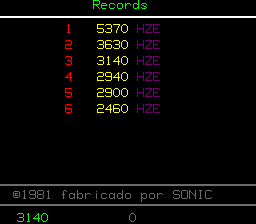
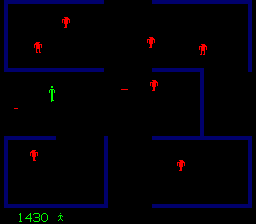
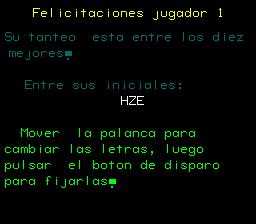
(French and Spanish versions of Berzerk were dumped, Spanish is shown)
As this is an audio change, I’ve also put up 2 clips, one for SPANISH and the other for FRENCH. These are recorded from a session playing the game. Both versions seem to play less varied speech clips than the other sets, presumably because of cost / rom space, and I’ve been told several are very literal translations of the English that don’t make much sense in the languages (think the kind of results you get with Google Translate on webpages) but still, amazing to hear these versions!
French…
And Spanish…
Bigger Names
Progress on games from the bigger arcade developers is less frequent these days, that’s mostly because the majority of games of a period suitable for emulation in MAME are already emulated in some form, but also because emulation of the remaining ones often represents a very significant challenge. Top Landing is a Taito game that definitely falls in the ‘significant challenge’ bracket so seeing it promoted to working was a good feeling.
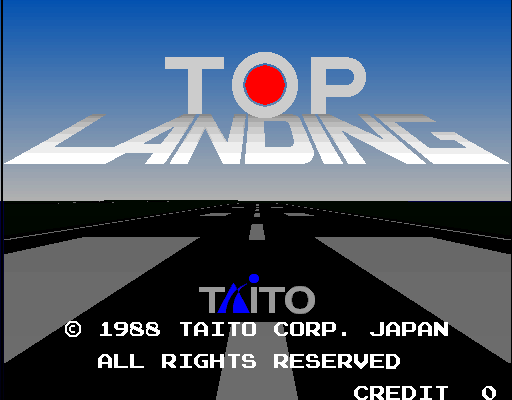
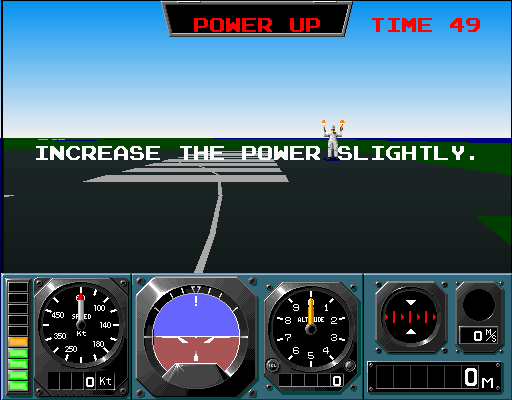
Air Inferno, the other Taito Air game also saw improvements, but is not yet ready to declare working.
Namco is another big name, as is Tomy, although not so much for arcade games. Both of them collaborated to create ‘Attack Pla Rail’ an odd concept for an arcade game where you drive a toy train along a plastic track.
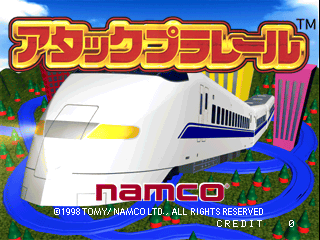
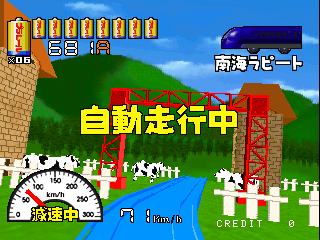
Techno Drive was also added (I feel it should really have been called ‘Technical Drive’ based on the nature of the game) but there are still issues, while screenshots were posted at the time it’s still marked as NOT WORKING and I’ve been unable to make it boot to gameplay.
NBA Jam Extreme is the not-very-loved sequel to the huge arcade hits that formed the earlier NBA Jam series.
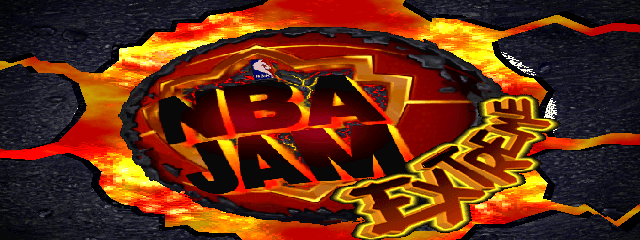
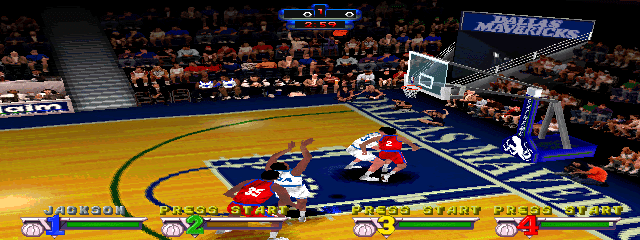
Pop ‘n’ Music 3 is one of the many Konami music games, always good to see them dumped tho because Hard Drives are fragile, 20+ year old hard drives moreso..
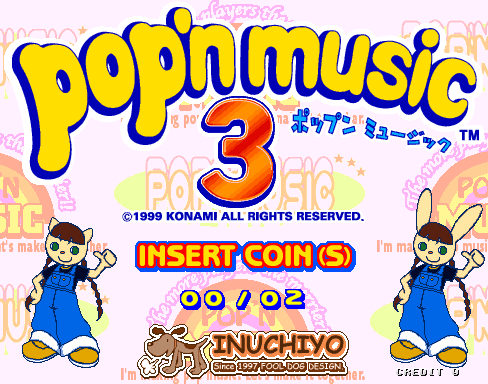
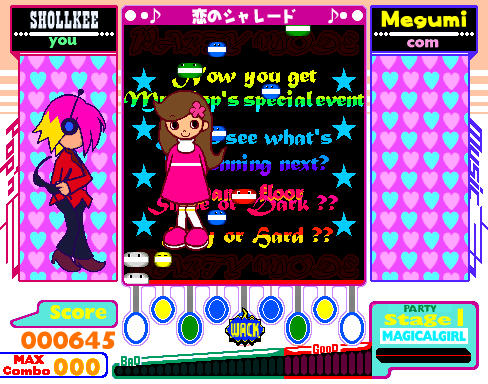
Improvements
MAME doesn’t survive entirely on new additions, improving what we already have is an important part of emulation and actually makes up the vast majority of the work done throughout the year.
Dooyong’s shooter Pollux was missing some graphical effects.
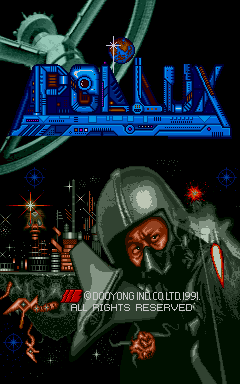

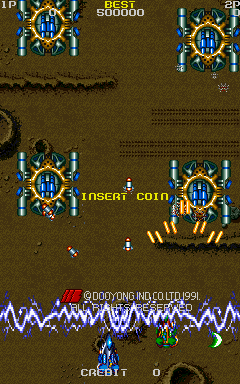
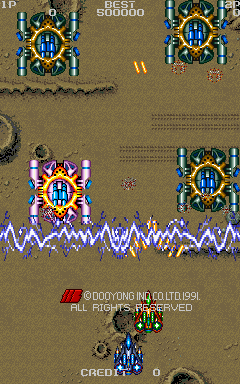
Zaccaraia’s Lazarian as well as Cat ‘n’ Mouse on the same hardware had been marked as working for years but in all honesty had so many emulation flaws it was almost insulting to consider them to actually be working. Improvements to the driver throughout the year really took both games to the next level, providing significant visual improvements to both games.
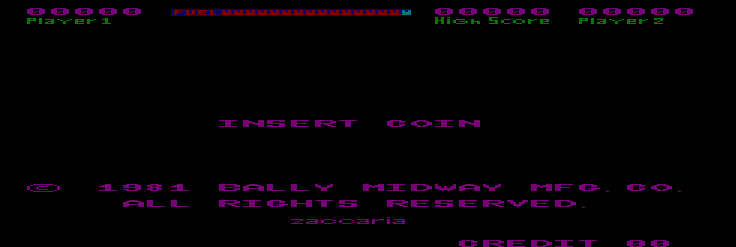
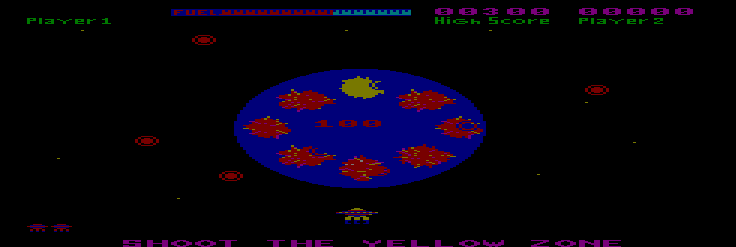
One of the big selling points for Zaccaraia with Cat ‘n’ Mouse was the audio, the game has a large amount of music compared to other games released around the period, with each level playing a different tune. That is now emulated and if we’re honest about things, the changes actually bringing both games to a level that can actually be considered playable / working. Cat ‘n’ Mouse likely has an underdumped graphic rom however, causing some sprites to still be incorrect.
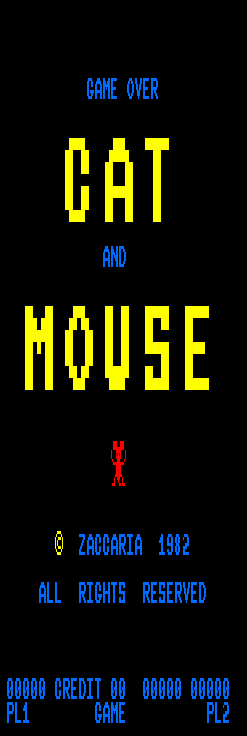
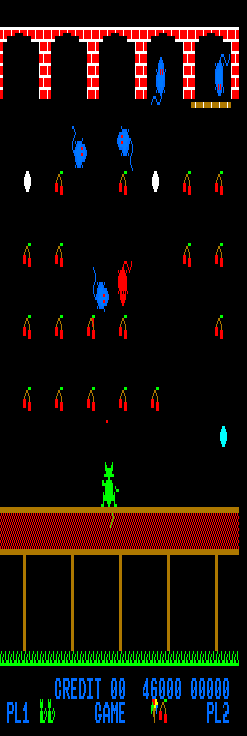
Very significant improvements were also made to the Macross Plus driver, with zooming effects, priorities and various line effects benefiting greatly.
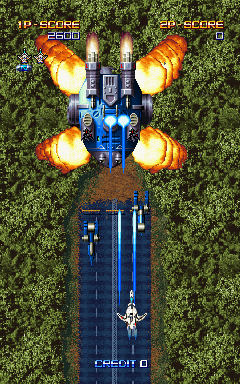
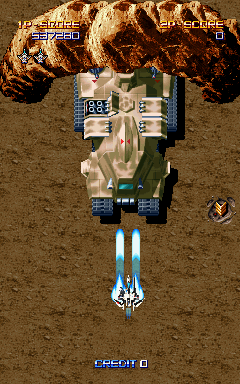
Nostradamus, a shooter by FACE, also saw driver improvements with missing graphical effects now emulated, meaning the masking effect when one of the bosses appears is now shown correctly, as are the arms on the final boss. Sound balance, and some screen fades were also improved.

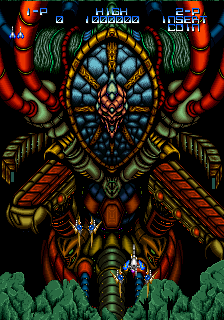
Suna’s take on an Arkanoid style game ‘Brick Zone’ was also improved, the sound latch scrambling was emulated meaning the game now has much nicer sound effects than previously, also support for the ‘Version 1.1’ clone was fixed, that version turned up with a whole bunch of prototypes a few years back so might actually be quite interesting in it’s own right, protection etc. is a bit different.
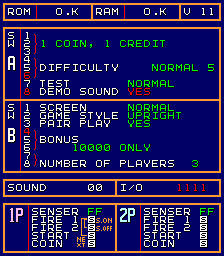
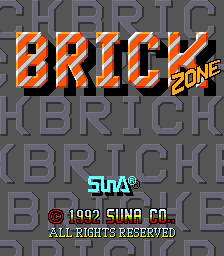
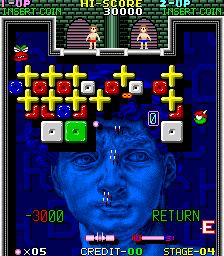
Mortal Kombat 4 recieved a large number of fixes to the video emulation with many blending effects now implemented much more correctly than before, this is very evident with the projectiles in the game, all of which had big black borders around them prior to these fixes. The game reportedly still crashes back to desktop after a few round tho, which is a shame.
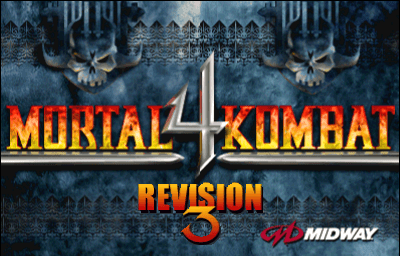
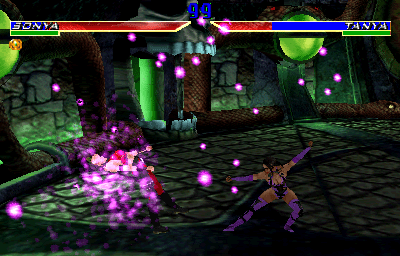

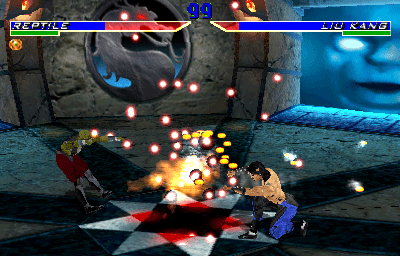
Making ANY progress with the Hyper NeoGeo 64 hardware is like battling your way through a sandstorm, so it was nice to be able to see some progress in 2015, with preliminary audio emulation (and by preliminary I mean very preliminary, it’s earbleeding, but at least points us in the right direction) The game with the least offensive Sound Effects as a result of this is probably Fatal Fury Wild Ambition.

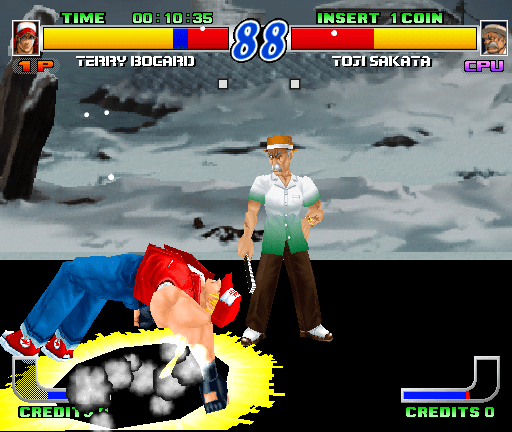
Some texturing fixes were also made, allowing the advertising boards and flags etc. as well as some road textures to render better in Xtreme Rally, the game still isn’t playable, and there are still more serious problems with the polygon pipeline and texturing to fix tho.
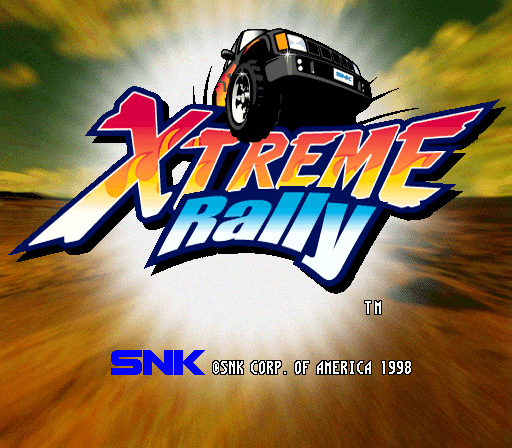
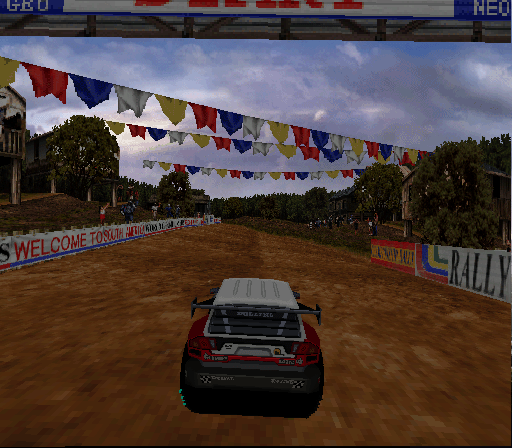
The driver for Jaleco Mega System 1 also saw numerous effects emulated, the first i’m going to mention is the sprite mosaic effect, this allows for sprites to become more pixelated, a technique that was widely used on the SNES because it too supported it in hardware. Shingen Samurai-Fighter makes use of this effect when you kill an enemy with a specific sword (unfortunately for other reasons the game is still broken and crashes after a short time tho)
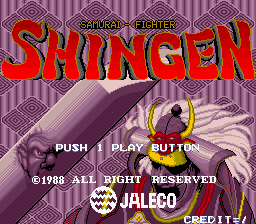
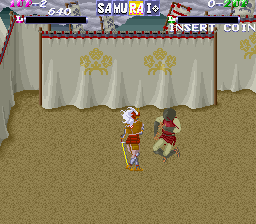
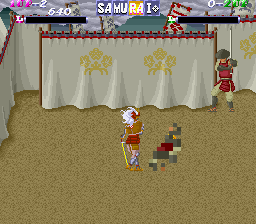
The prototype game Chimera Beast makes more extensive use of the effect, as part of the transformation sequence when you eat another creature to become bigger, it actually looks rather good in this role (better animated than in still screenshots)

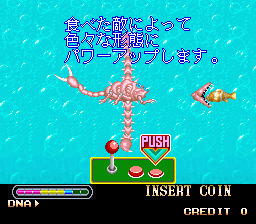
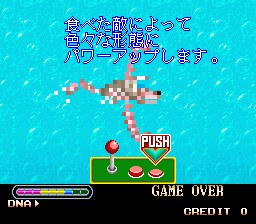
Another observation was made with the Megasystem 1 hardware that allowed us to fix the attract mode movements in 64th Street; there is ‘Byte smearing’ when the 68k writes to main RAM, causing byte writes to mirror. This is due to lazy decode logic on the PCB, something we also saw on the NMK16 driver games. Furthermore there was some video RAM mirroring missing, adding it fixed the backgrounds, which previously weren’t being destroyed correctly when you threw enemiesat them.
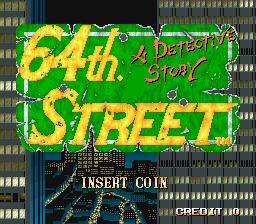
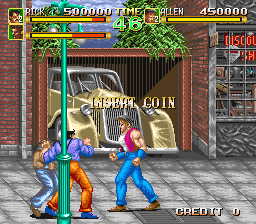
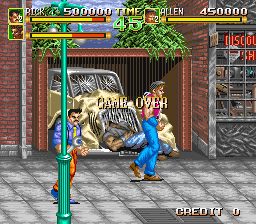
Finally, attempts were made to emulate the sprite trail effect, used by the Jaleco logo on P47, it’s probably not 100% correct yet (the clearance part is almost certainly wrong) but it’s closer than it was. We later discovered that one of the magic weapons in Ninja Kazan uses this effect to, but that wasn’t made playable again until early 2016.
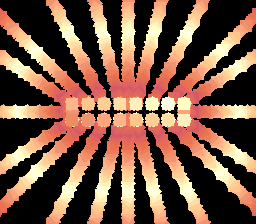

Konami’s Big Run is a game that looks far better in still screenshots than it does in action, it’s hard to believe this is running on similar hardware to the classic Wec Le Mans. Either way, it’s suffered from speed problems in MAME for a long time, with the game being too slow for many years, too fast for a while, and maybe now actually correct – the game seems to depend on close communication with the sound CPU. It still plays really badly, slows down and speeds up when you least expect it, but at this point I actually think it’s just the game, it’s simply not well programmed.
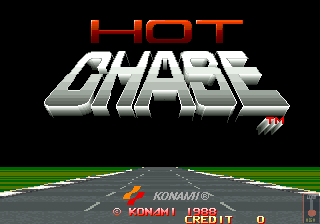
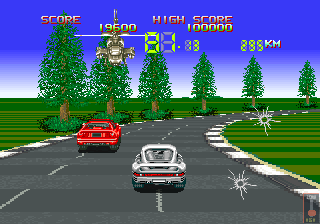
The Aquarium driver also got an overhaul, sound banking was fixed, sprite vs background priorities were fixed, and the whole thing generally cleaned up meaning it’s now better emulated than ever before.
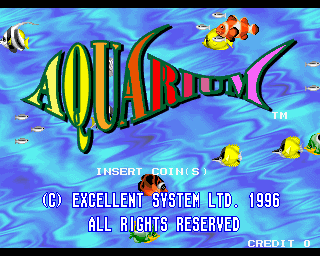
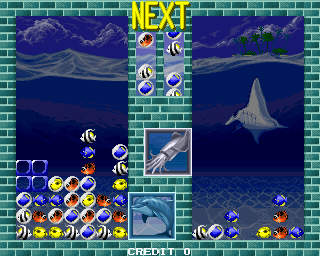
I’m guessing not many people ever actually bothered running ‘Chanbara’ maybe because it’s absolutely terrible, but it did have some obvious bugs with the tile flipping on later stages causing the backgrounds to render incorrectly, this was one of many smaller fixes made to MAME over the year.
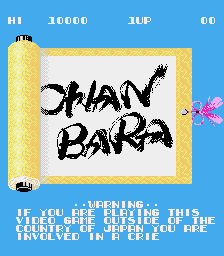
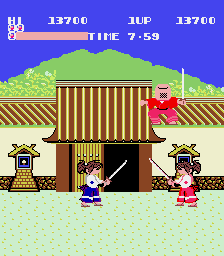
Other small fixes include the sound being improved in Sega’s Cool Riders (best experienced if you turn off Demo Sounds in service mode so you don’t have the sounds from the 2nd screen overlapping your gameplay sounds) as well as improvements to the Seta X1 sound chip emulation, used by a wide variety of Seta games.
Lower level emulation of the Alpha MCUs was started too, for many years MAME has emulated the Alpha MCU as if it were a real CPU, when in reality it’s a virtual CPU that’s implemented in software on a 4-bit MCU, we have dumps of the internal code for a lot of the actual MCUs and several of the drivers now us.
The Semicom Dream World type hardware driver was improved too, leading to better background rowscroll effects in things like Baryon Future Assault.
Player 2 colours in Suna’s Sparkman were fixed, likewise Taito’s rare Wyvern F-0 received some fixes and while some colours do still look ugly there they’re the same ones as look ugly on the PCB, not different ones.
In some cases rom redumps helped with things, the Wizard Fire sound rom for example had been dumped at half-size for many years, a proper dump of that fixed the sound in the cutscences (although it’s not obvious how the rom is banked, the World version uses one half of the rom, the Japanese verison the other, we currently have a hack)
The Comad Gals Panic rip-offs ‘Fantasia’ and friends also saw improvements, with layer enables / disables properly added so that the title screen only appears when fully drawn.
Small progress was made on some obscure drivers like Monza GP.
One thing that maybe should get bigger coverage here is the ability to link up 2 copies of MAME running on the same machine; this feature was implemented for a number of Sega titles, although is still very much an advanced / WIP type of feature.
Discrete Emulation
Various IREM games benefited from emulation of discrete sound components. Kid Niki, Horizon and Spelunker all gained emulation of analog drums, although at a VERY heavy performance cost.
Kid Niki
Horizon
Spelunker 2
It’s not surprising, discrete emulation is slow, people complained in the past about how much it slowed down things like the Asteroids and Donkey Kong drivers, but those were all relatively light use cases.
Following on from Pong in previous years we actually saw the introduction of emulation for Break Out, another entirely discrete game. Unsurprisingly it too is very demanding in terms of performance, yet still represents the easier / lighter end of the spectrum, with things like Monaco GP sitting at the other end in terms of complexity; if we emulate that I hate to think how it will perform!


Long-standing Regression Fixes
Sometimes drivers regress in subtle ways, there are times these issues are noticed and fixed immediately, and other times when a MameTesters bug gets logged but nobody is active on the driver to fix them (or fixing them is actually a significant challenge without breaking something else) There are also times when bugs manage to go completely unnoticed for years.
Flipscreen support in the Sega System 16 driver was one such regression, now, if you don’t play games on a cocktail cabinet you might wonder why flipscreen would matter to you, now, it might sound a ltitle odd to hear, but the game SDI actually uses flipscreen mode for the regular game, in order to flip the backgrounds, Sega just happened to turn on the flipscreen bit, but then also then use flipped versions of everything else so that it appears the actual game isn’t flipped at all.
The games Excite League and Super League also *require* flipscreen support to be working because it appears those games were designed exclusively for use in a cocktail cabinet, so the display always flips for the 2nd player. I’m not sure there is actually a build prior to this year where they work correctly because it looks like the flipscreen support broke somewhere around the time the driver was rewritten (a long time ago) but before those two games were added. I can’t say with absolute confidence there is no other version where everything works, but I’m fairly sure if there was it was a very narrow window.
The NES based arcade ‘Zapper’ games (Duck Hunt etc.) were also restored to a former state where shots actually register correctly (although oddly enough not on pure white colours, but that might be a game design thing)
Demotions
It’s rare that a game in MAME is demoted from working to non-working state, as typically if a game STOPS working it is considered a bug that needs to be fixed rather than a need for the status to be demoted, however, some games simply never worked properly from the day were added and were not deserving of the ‘Working’ flag in the first place. In those cases it’s not considered a bug / regression, but a mistake in them being tagged as working in the first place.
It’s not really a positive thing to mention, but amongst the games demoted was Strider 2, which has always suffered from random lockups (often when fighting the bosses) and the obscure pinball title ‘Super Wing’ which appears to work on the surface, but then crashes if you attempt to enter a bonus round due to what looks like it might be a bad dump of one of the ROMs.
Lazarian and Run and Gun narrowly escaped demotion thanks to work done on the drivers that was already mentioned above.
Of Moderate Interest
A lot of Capcom ‘Sample’ versions that show up don’t really seem to show that much difference to the final builds, they’re already running with finalized MASK roms, and just seem to be versions sent out for review, or to preview a game to another market before sales start. A USA version of Street Fighter Alpha 3 was dumped, dated 13 days before the official release it boots up with the ‘SAMPLE’ versiontext (the date is 980616 vs 980629) I’m guessing it falls into a similar category. A couple of things that did catch my eye tho, the final version of the game displays the web URL for Capcom’s website, this SAMPLE version instead has a slightly awkward ‘mailto’ address, note, it’s even using the Japanese ‘zero’ title in the address on this US set. The other noteworthy thing about the set is that it won’t show up the endings, the game simply ends after a certain number of rounds which makes sense if the idea of this version is that it was to sell the game to operators rather than being used in an arcade.
Below are some comparison shots.
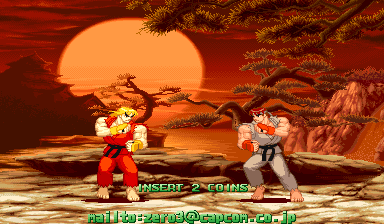
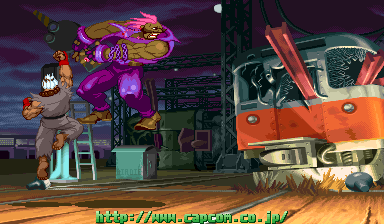
The NeoGeo game Bang Bang Busters was finally added, this game, originally a prototype in the 90s, that was then going to be released in 2001 but was cancelled once more finally surfaced a couple of years ago when it was actually released in 2011 by ‘NCI’ The NCI release appears to be an untouched version of the game that was being prepared for release in 2001, but wasn’t added to MAME immediately when it was dumped due to project policy. Other emulators, did support it, so while it’s good to see it included it’s not the biggest piece of news in the world.
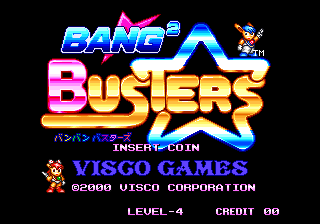
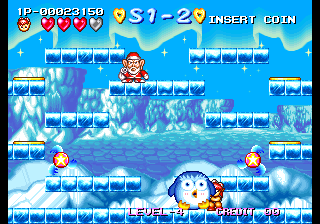
Non-video
Wacky Gator was a popular Data East machine, it’s a take on the usual whac-a-mole style title and therefore not the most difficult of things to emulate / simulate using the artwork system as it isn’t really relying on any real world physics.
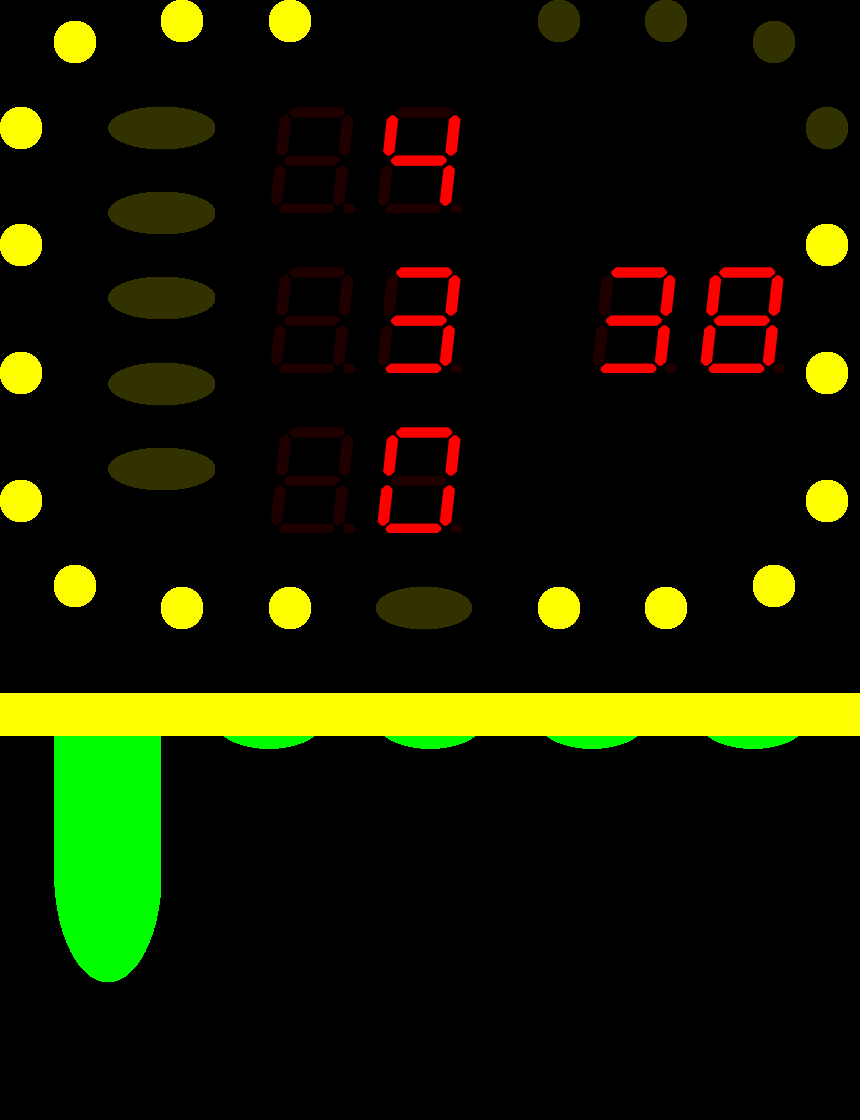
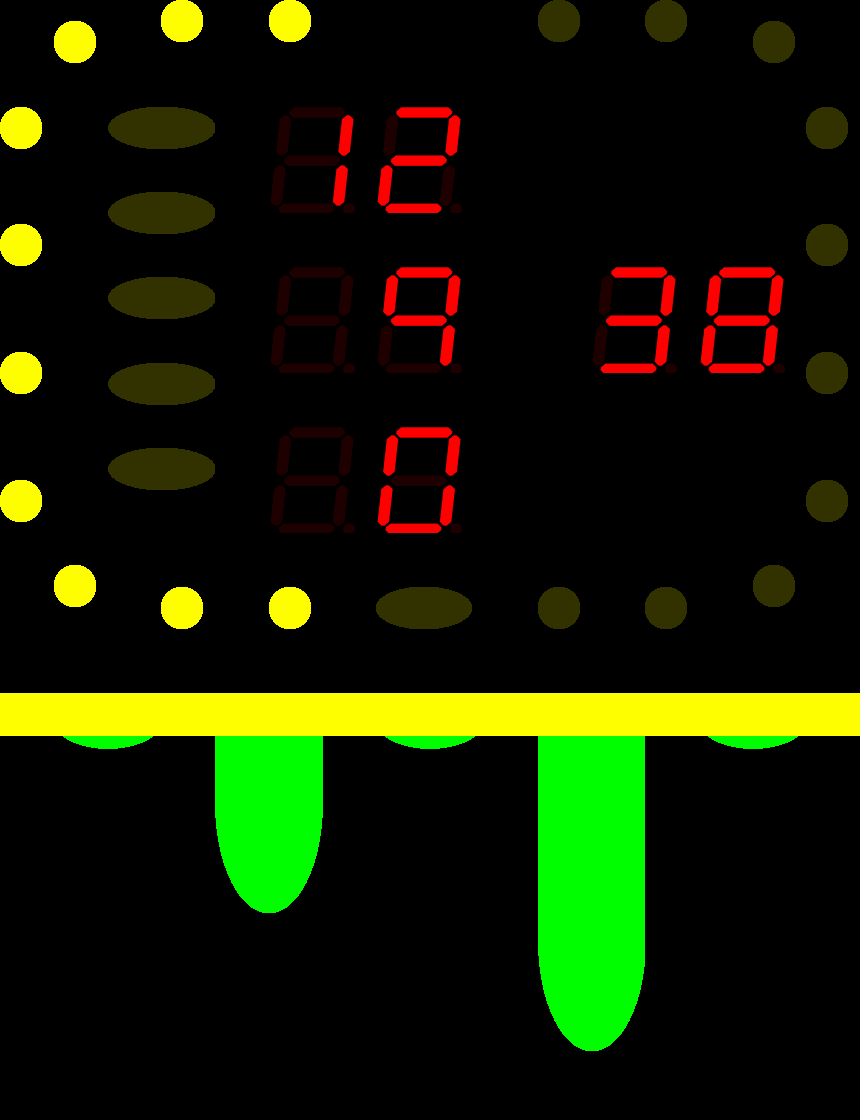
Operator Tools
A fair number of the Atari / Midway HDD based games had a socket on the board where you could install a ROM (or series of ROMs) to update the game data on the Hard Disk to a newer version. Several of these showed up throughout the year, and while in every single case we already had a copy of the game with the drive already updated it did allow us to give the option of loading the ROMs in the sets with the older HDD images, and allowing the user to update manually if they want, as an operator would have done back in the day.

Having these update ROMs also showed us that we’re definitely missing an earlier revision of the Hyperdrive Hard Disk, as we have a set of update ROMs that can update the game to the version we already have, but don’t have the original HDD release those update ROMs are meant to work with. Hopefully there are still some working drives of the old revision out there somewhere..
HLSL
HLSL was an ever evolving thing in MAME over the year, a lot of changes were made to improve both the visual aspects of it, and the performance, it’s actually very difficult to cover here because there were so many changes, all I can really say is that the changes made over the course of the year made it more worth using than ever.
The Merge
The official merge of the MAME and MESS projects into a single MAME project was important for a number of reasons.
One of the most obvious is the declining number of viable arcade targets, there are finite number of arcade games, the ones that aren’t emulated are either exceedingly difficult to emulate, exceedingly rare and impossibly to aquire, or simply not really in the scope of what we can emulate well at this time.
While in previous years I’ve intermingled arcade progress with progress made from the MESS side of the project this year, despite the projects being combined I’ve decided to split the article, partly because I’m busier these days than in previous years and simply don’t have time to go into a lot of the non-arcade stuff in detail, and also because I think it’s important to show the decline I talk about above, there’s definitely less visible progress on the arcade systems in 2015 than there was in 2014, and less in 2014 than there was in 2013 and I expect it to drop off even more sharply in 2016 due to market conditions.
The only way to sustain the project and keep the brand we’ve established going is to do more, we’ve always been perfectly positioned to do that, and MESS was never a strong brand in it’s own right, so the integration made sense, a lot of sense, and we’ve seen immediate rewards from doing it, many of the drivers from MESS now have some form of userbase when before they were just sitting there rotting and never really being tested. There’s also been a peak of interest in people wanting to emulate obscure systems, realising their work too can be part of the MAME project, that we’re accepting such things with open arms.
There are still some loose ends to tidy up with this, even by the end of 2015 the official website wasn’t fully updated to better describe what MAME is today, and it really should be, but we’ve always been fairly slow with such things.
Final Notes
As stated above this article isn’t really finished, there’s plenty of non-arcade stuff that REALLY needs adding to it, but the project is so active in those areas these days it’s difficult to actually keep up, of course that’s a really positive side of the merge, but it does mean I’m not 100% happy with this article yet. As I’ve not really managed to find time this year to finish it off I’m publishing it as-is, I might do a 2nd part to it with things I’ve missed. Even with the arcade side there were an number of other interesting things (bootlegs, hacks etc.) I’ve had to skip over.
How much passion and love to mame/mess you show in this article. You will never be able to leave the project!! :-) ;-)
Nice writeup and a interesting read as always!!!